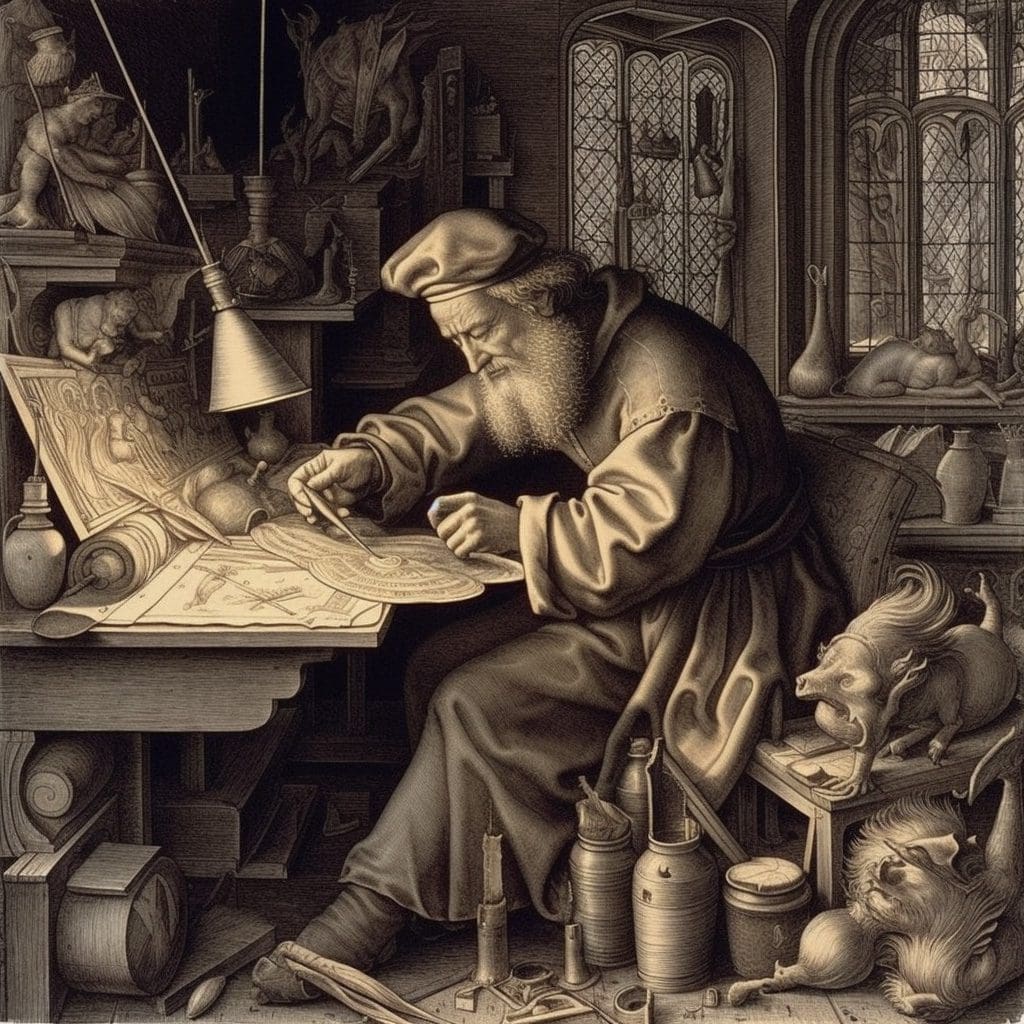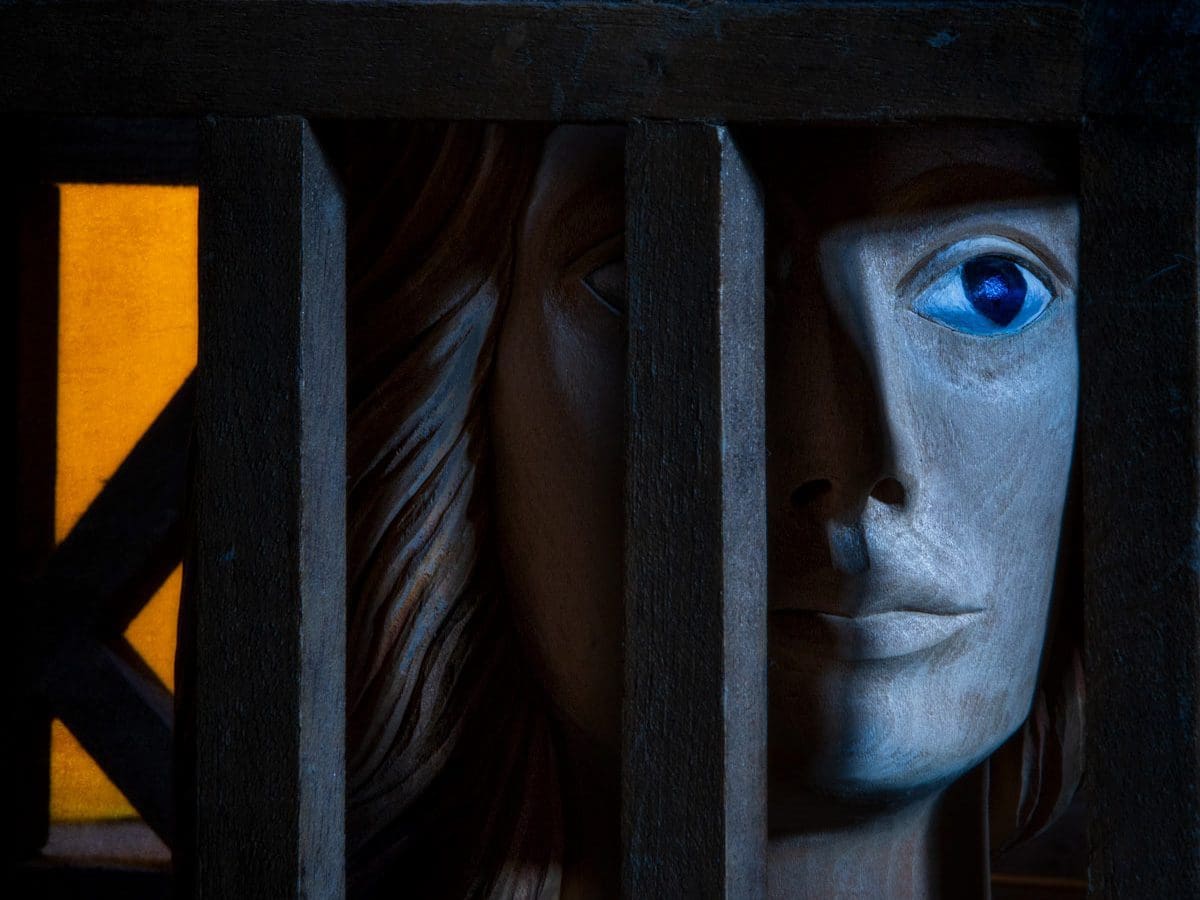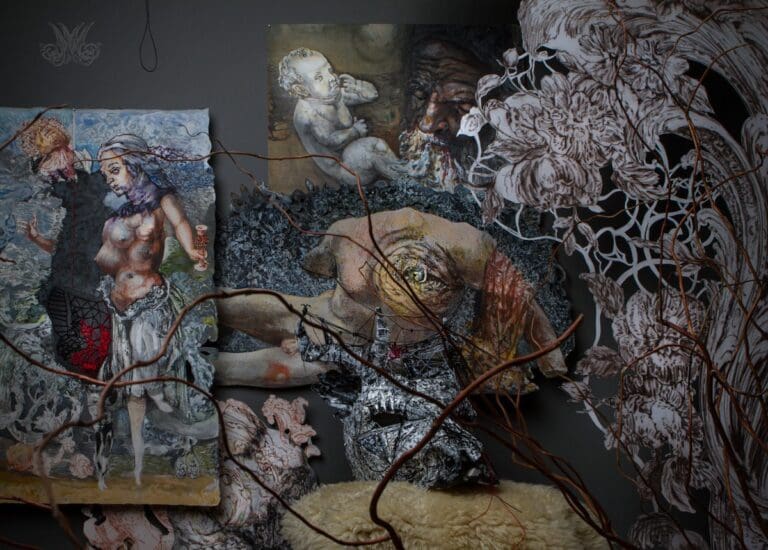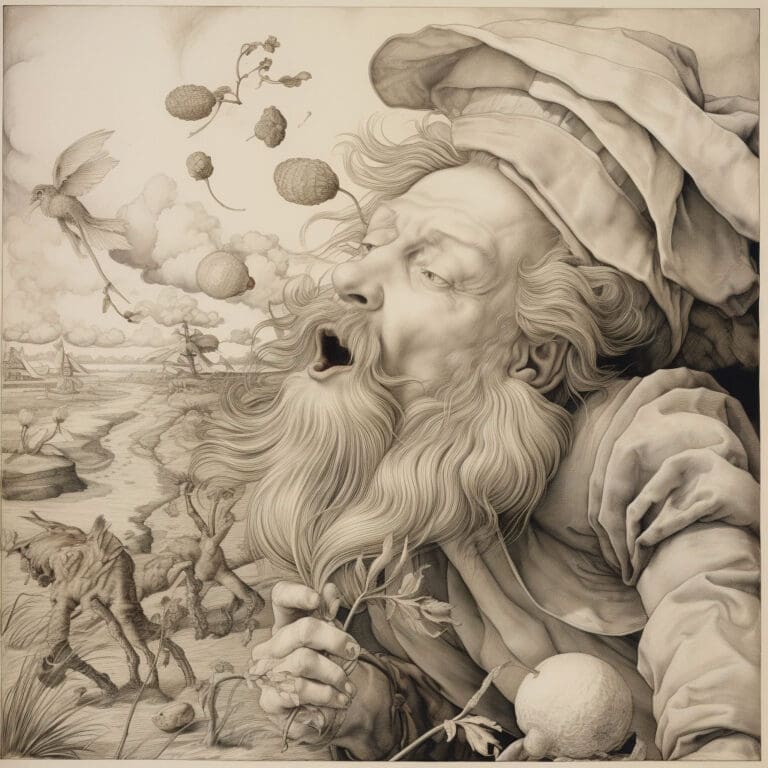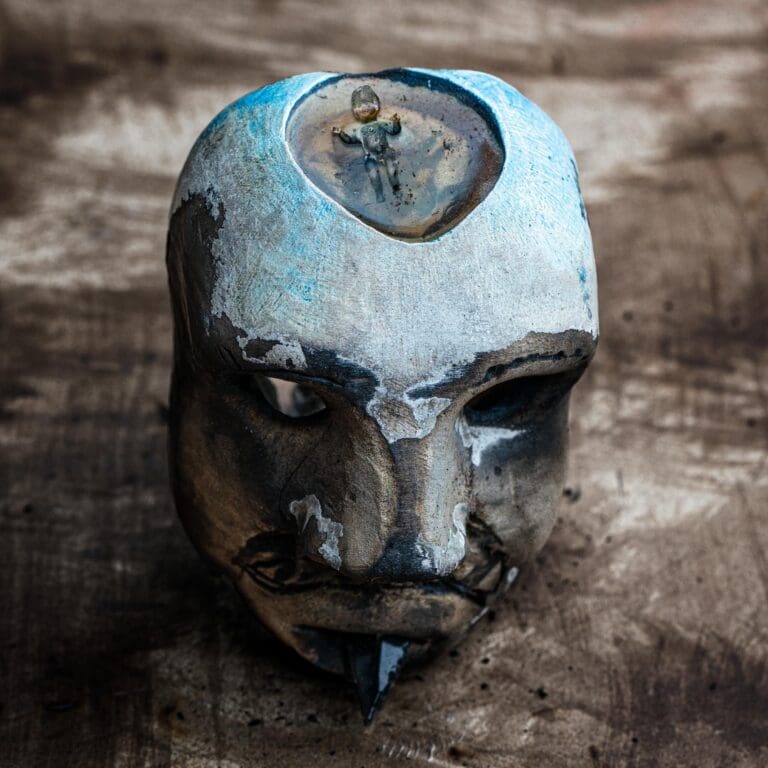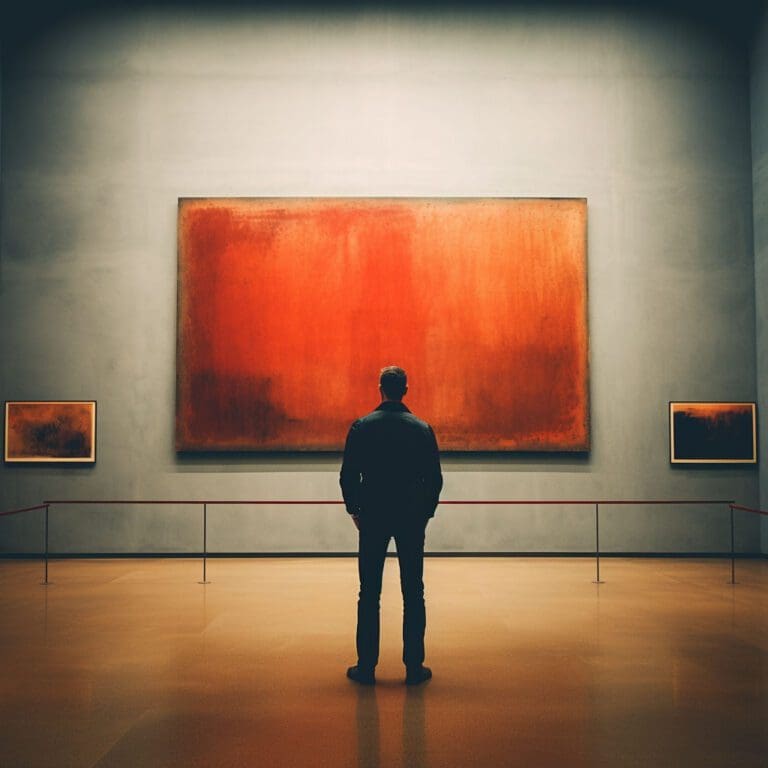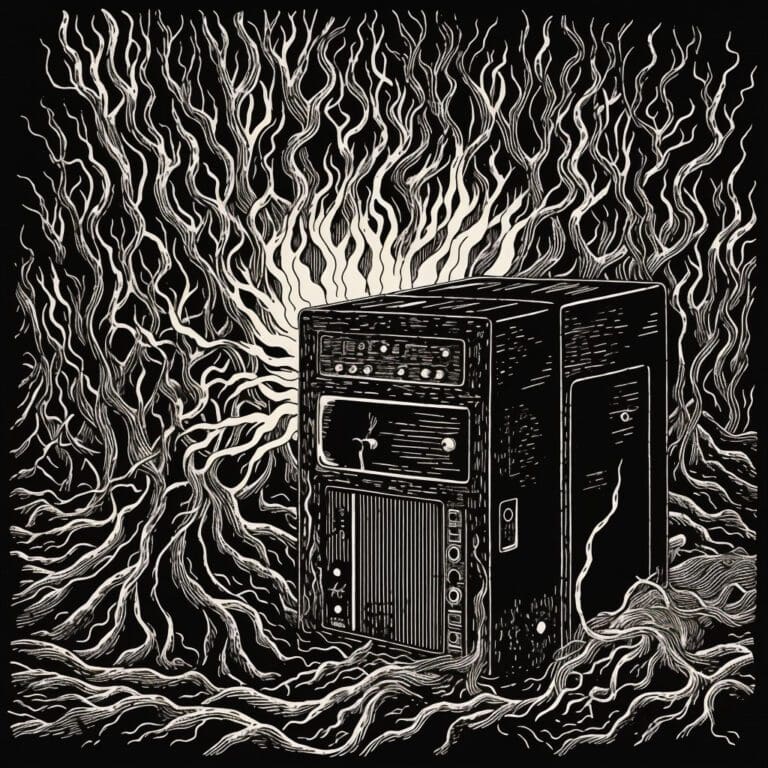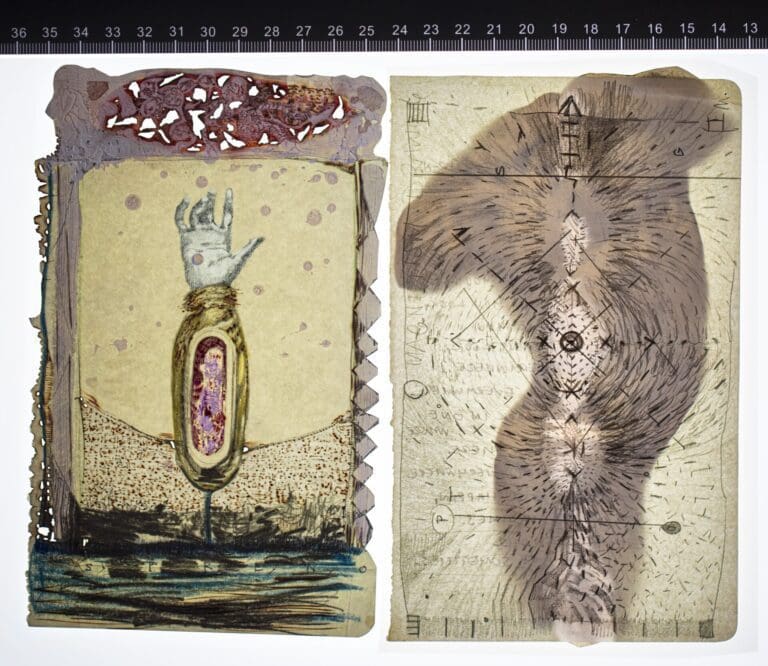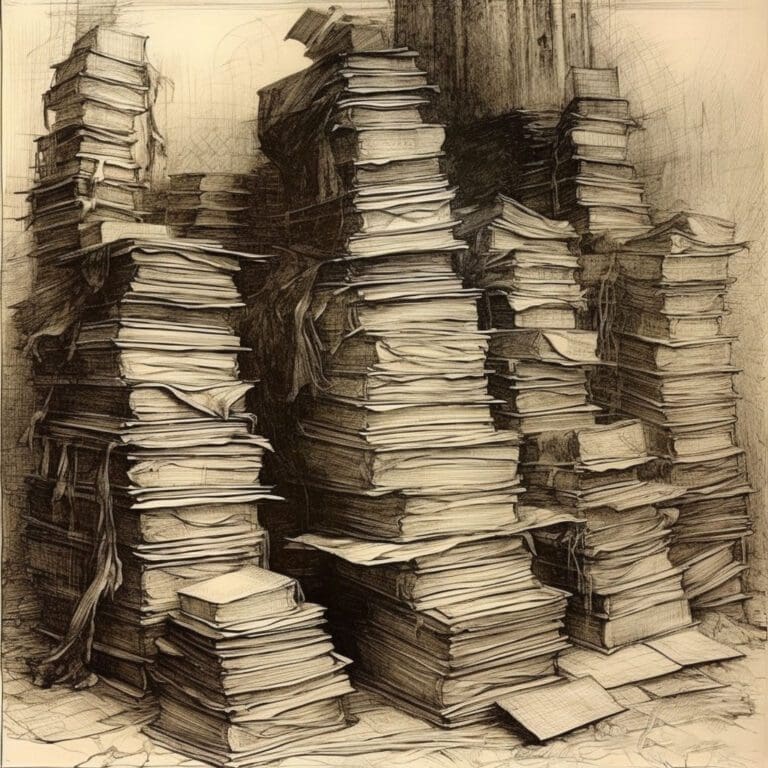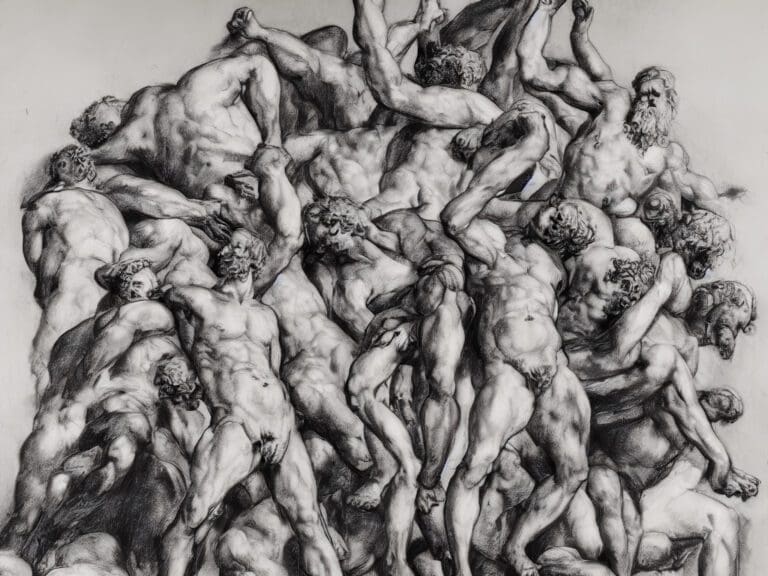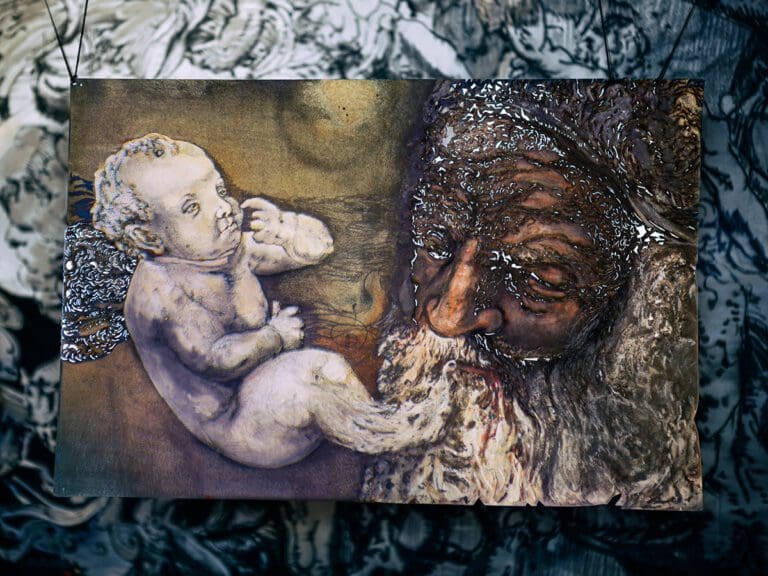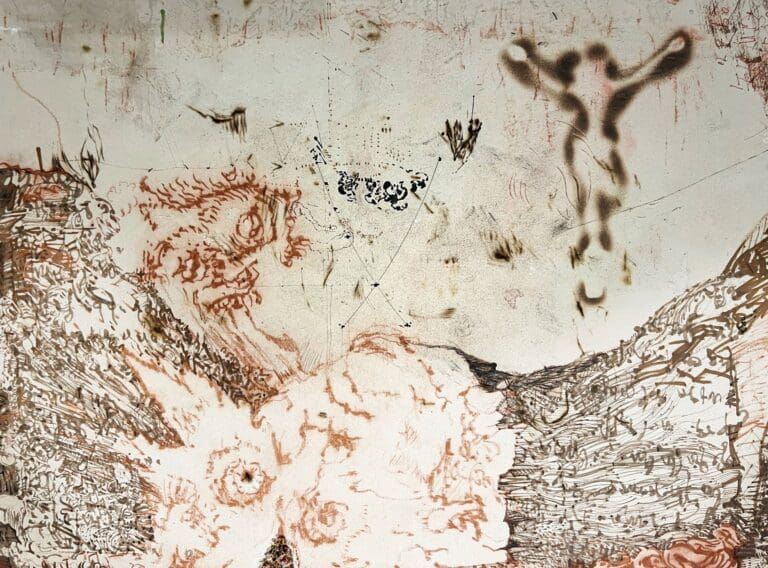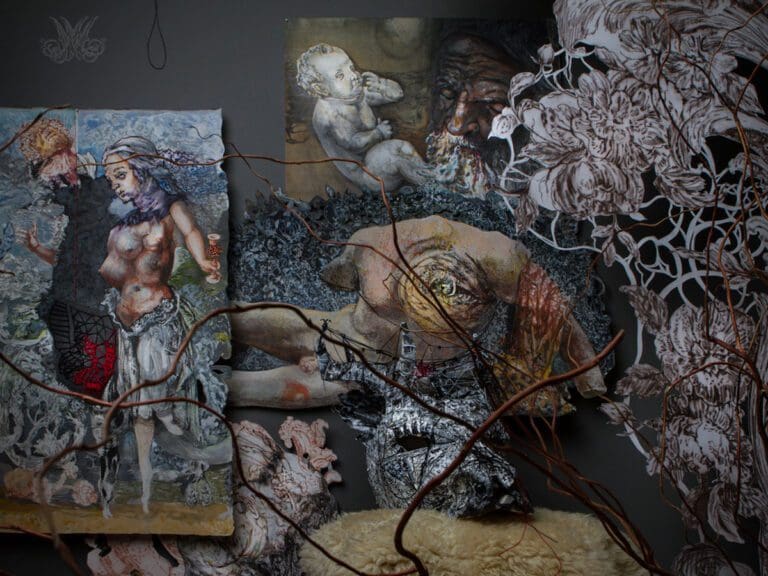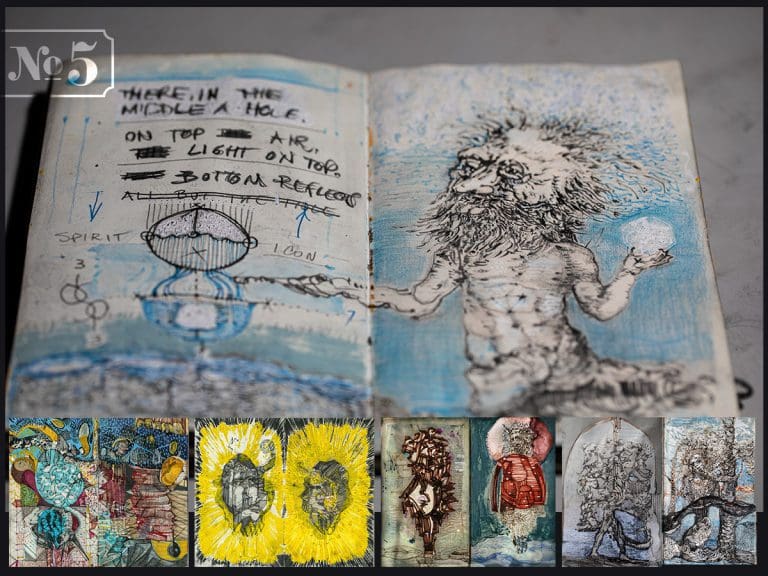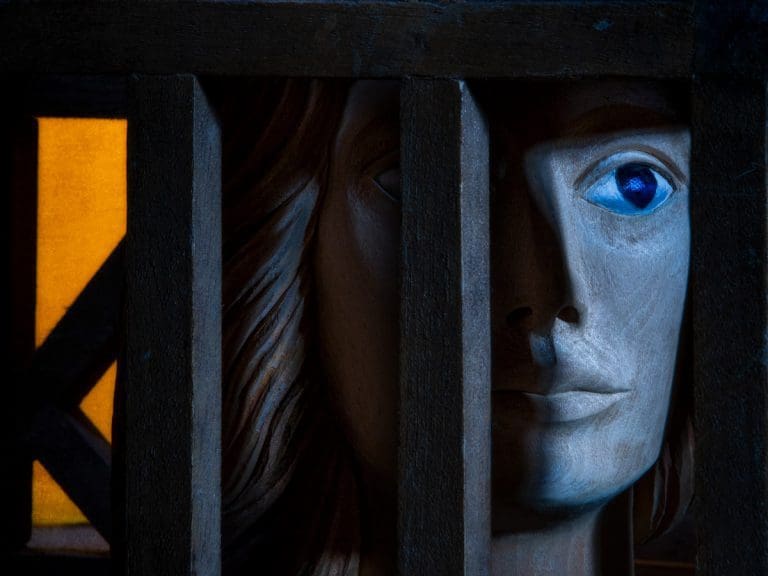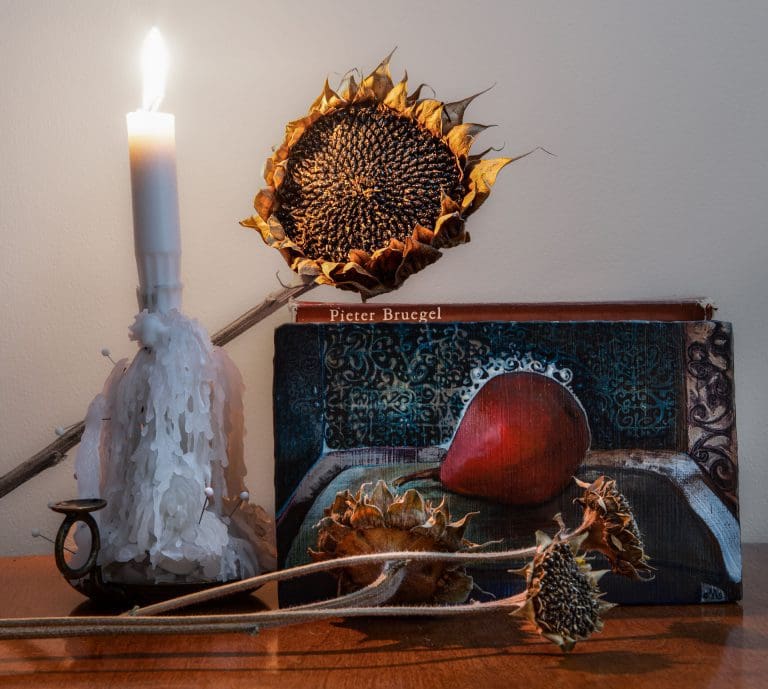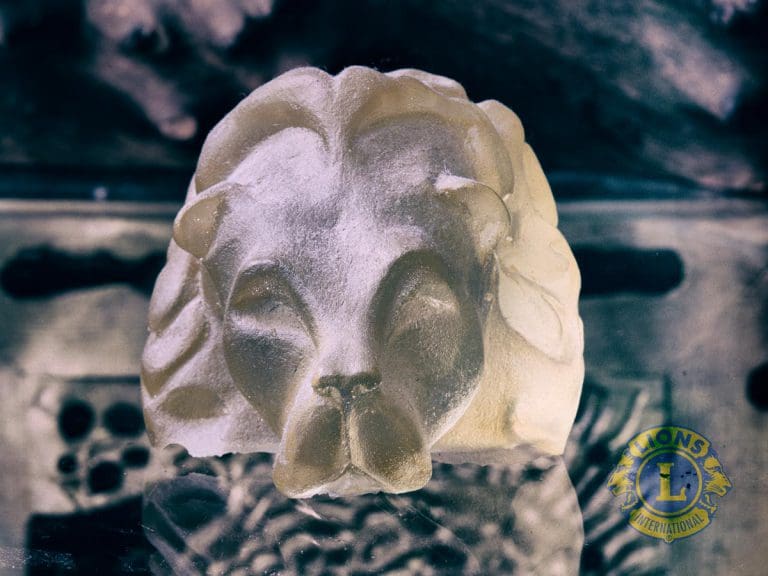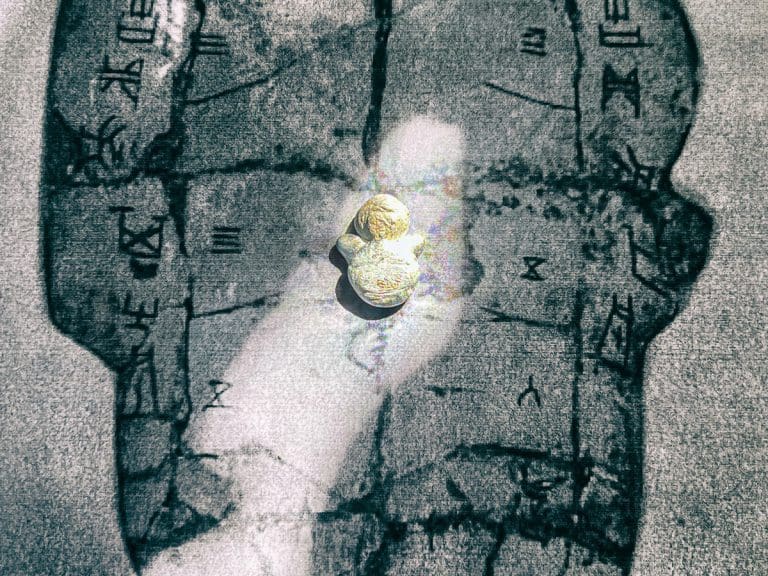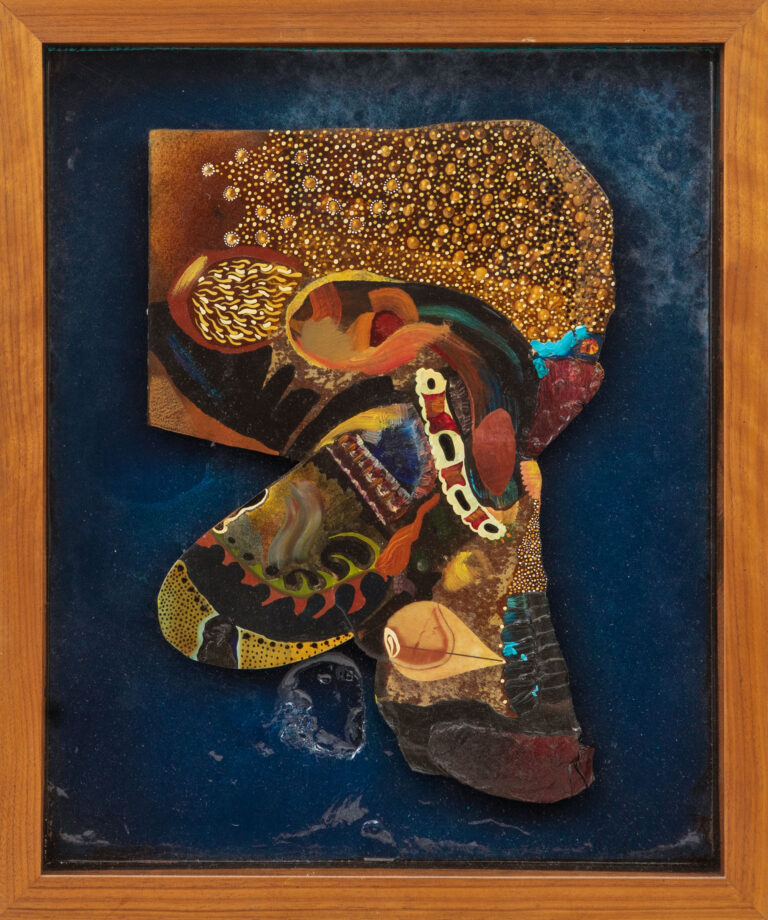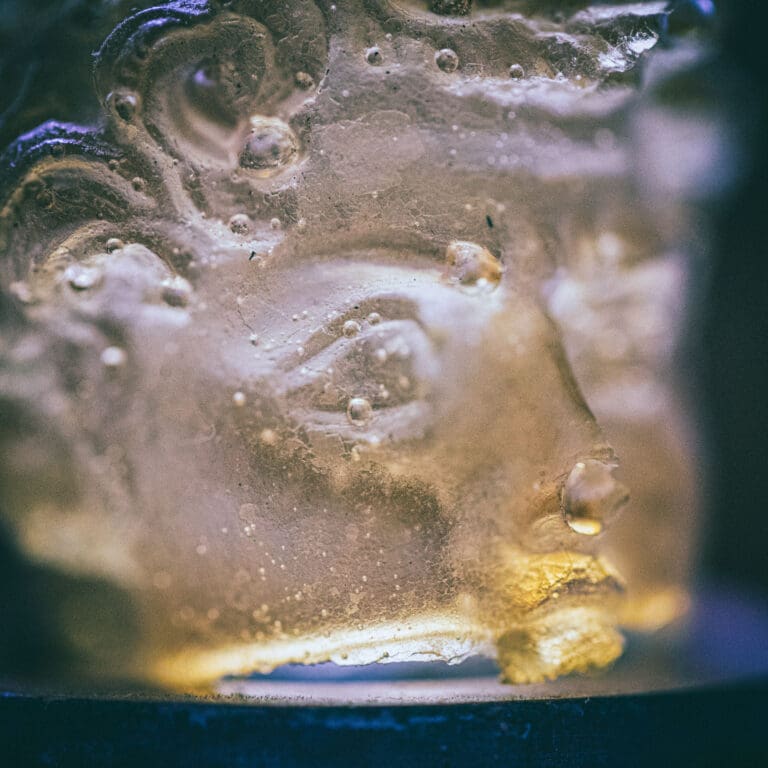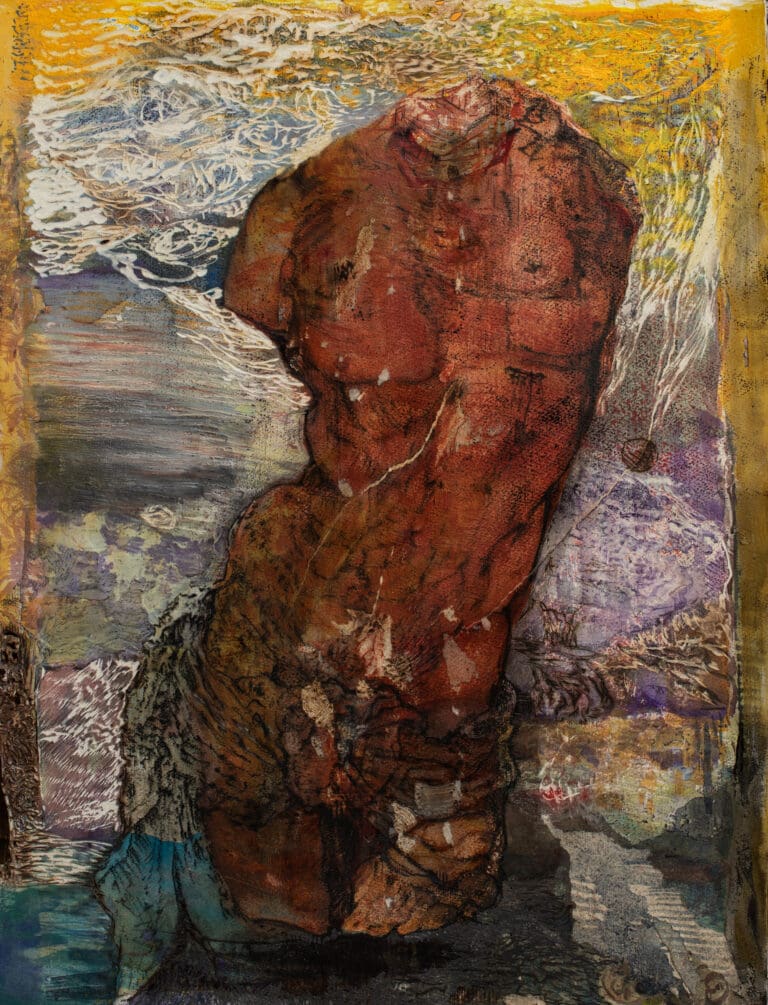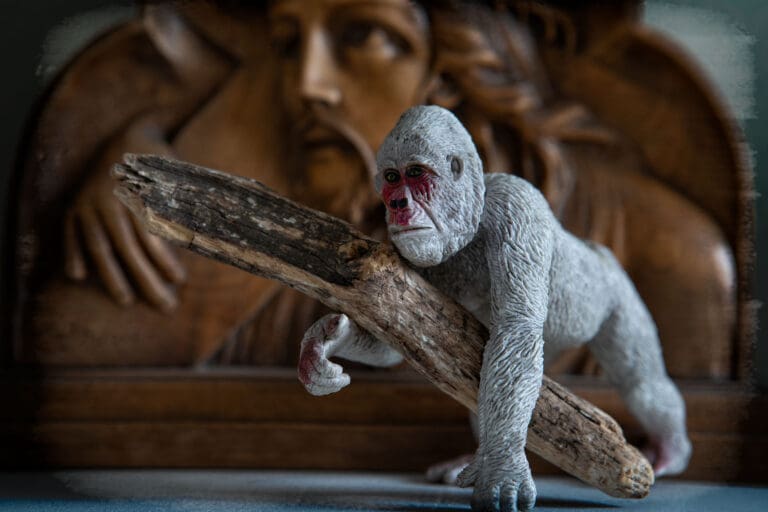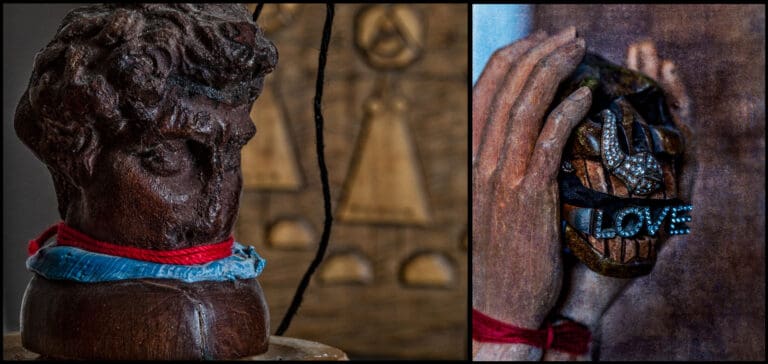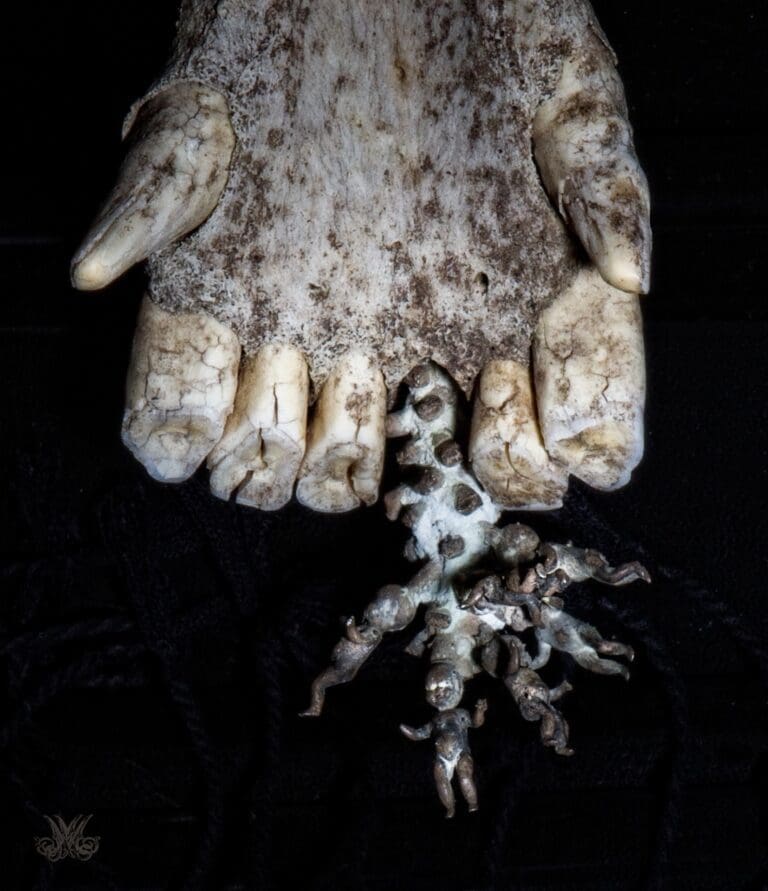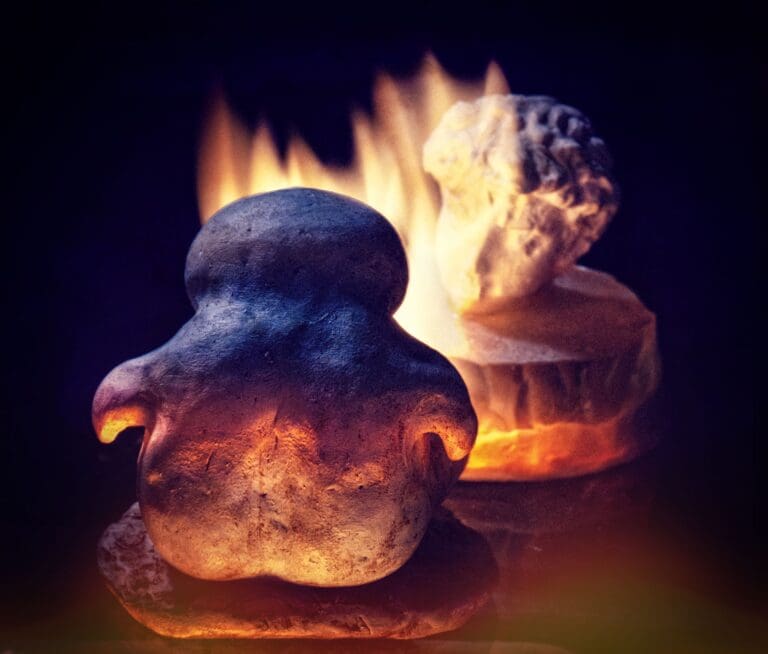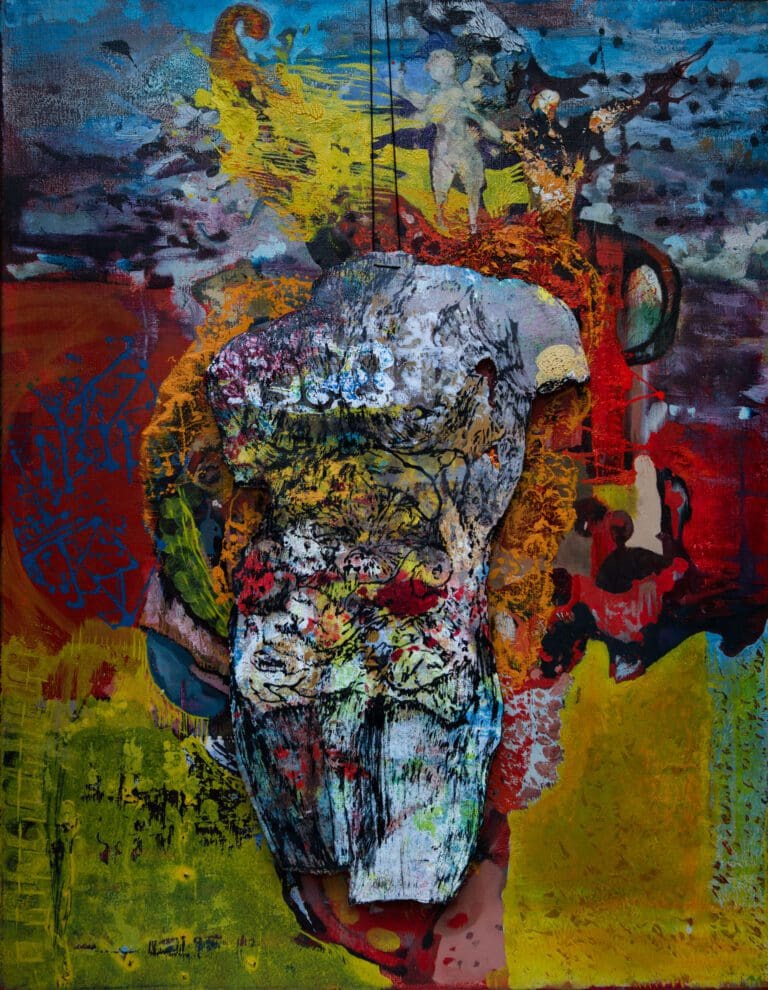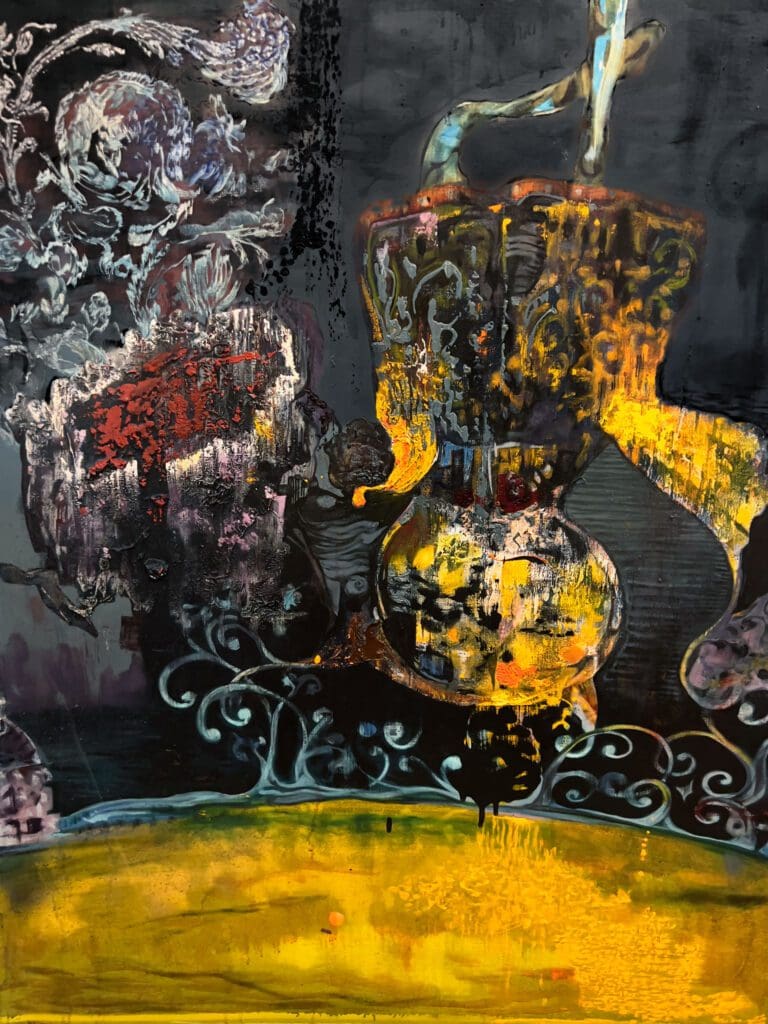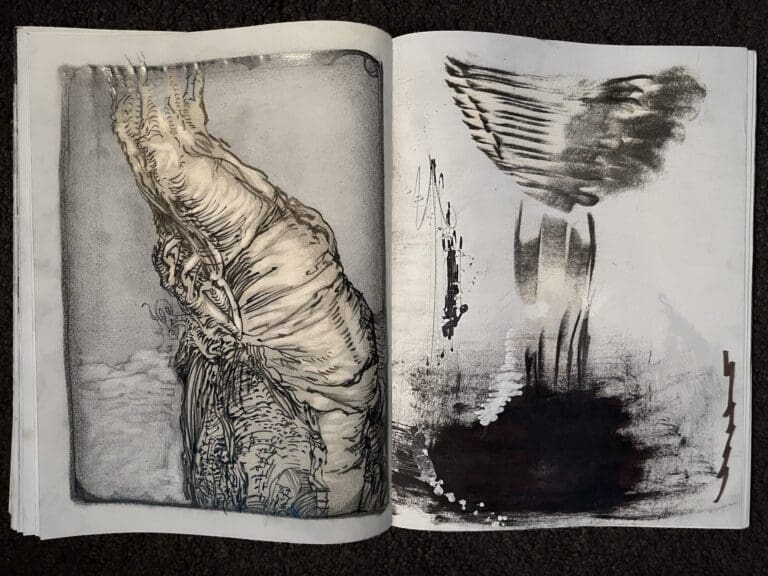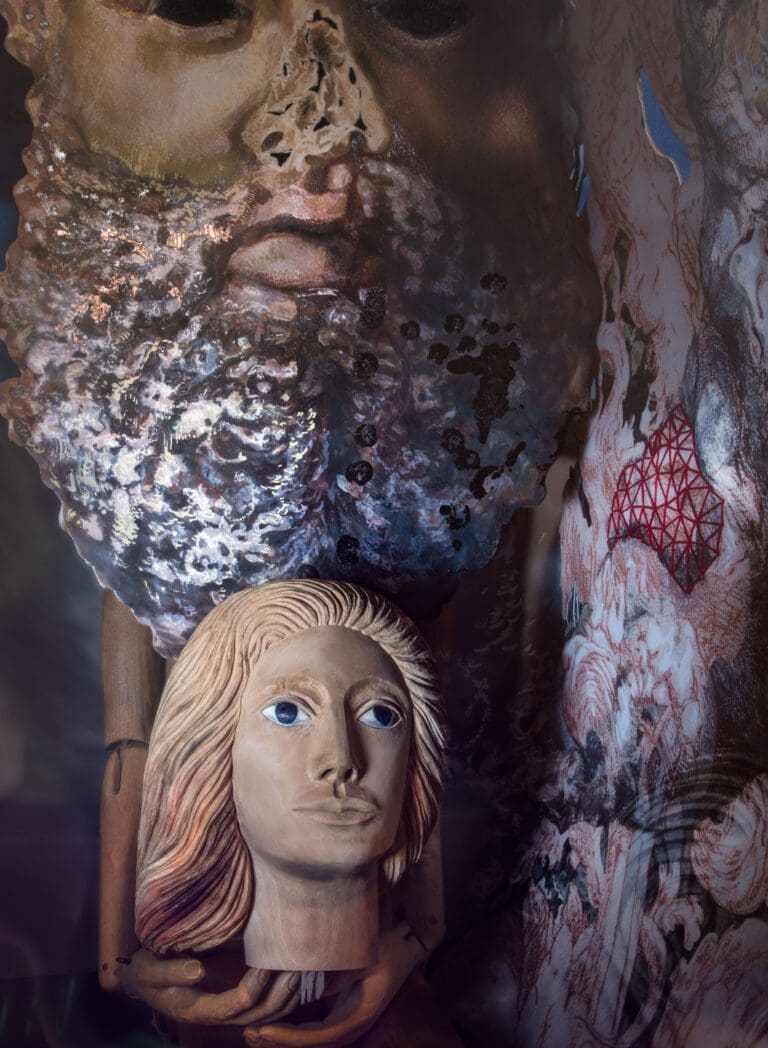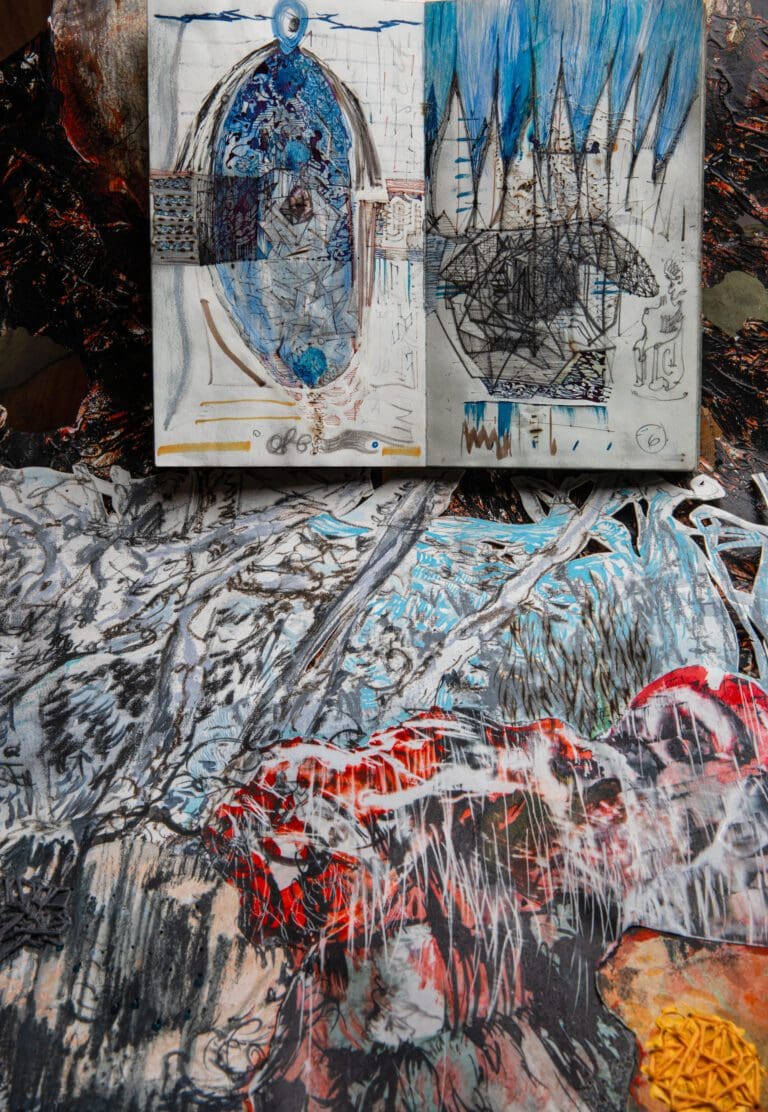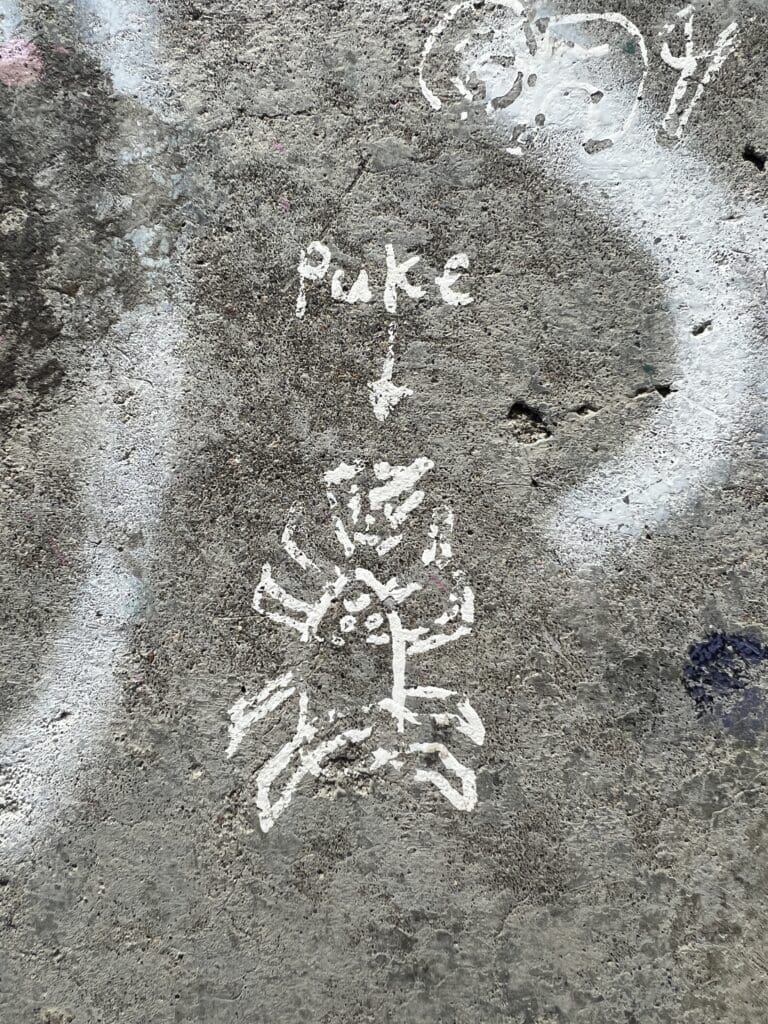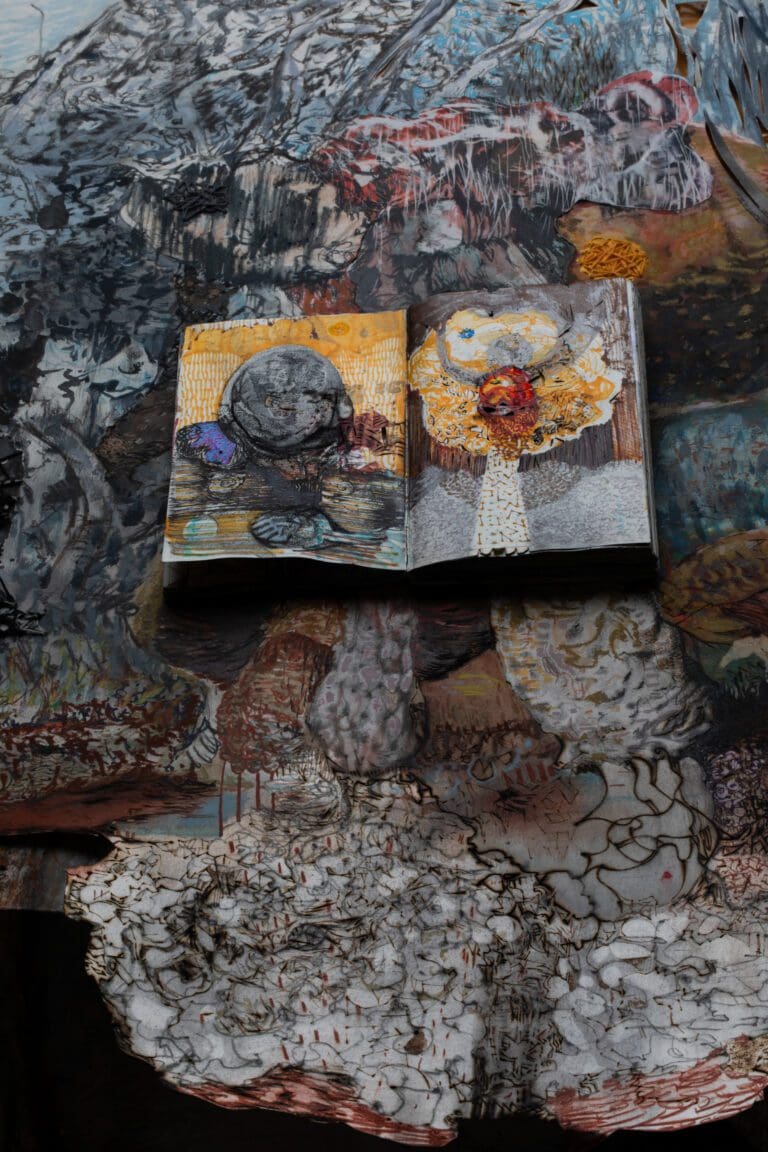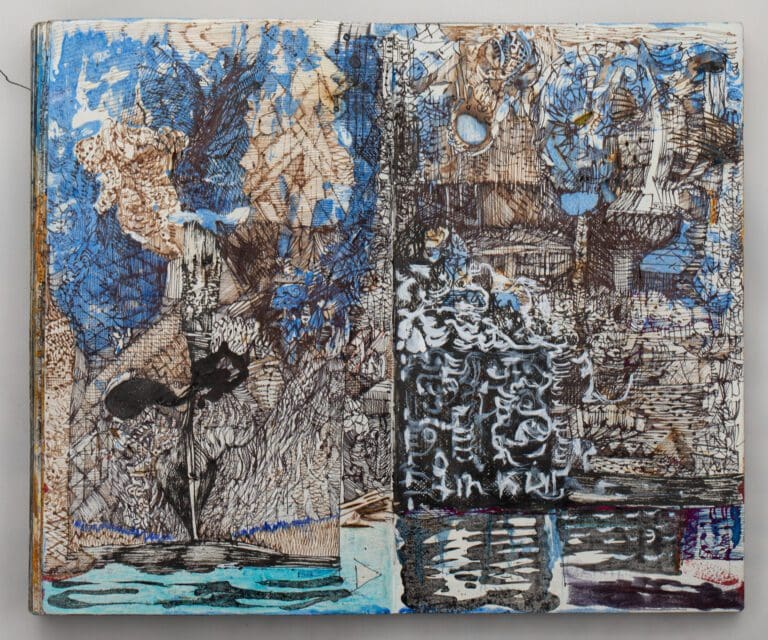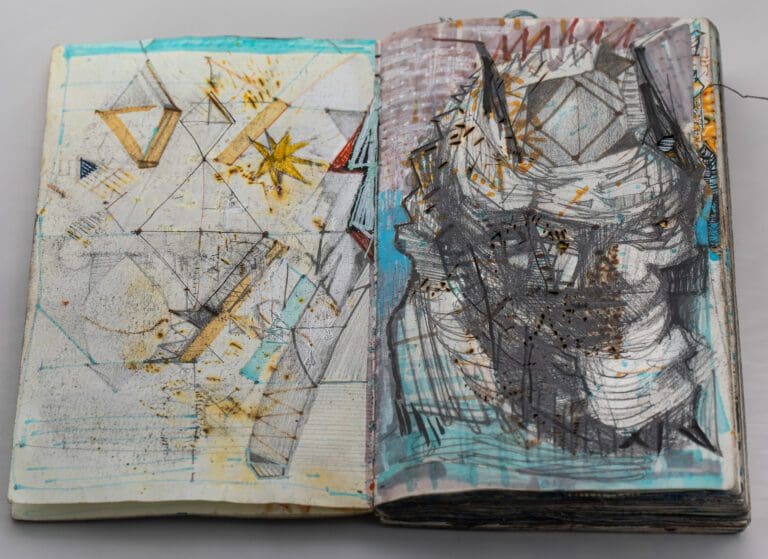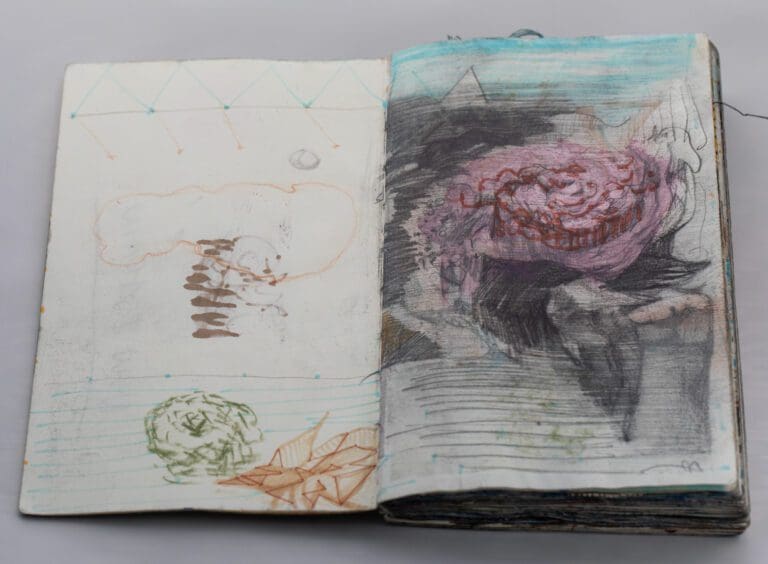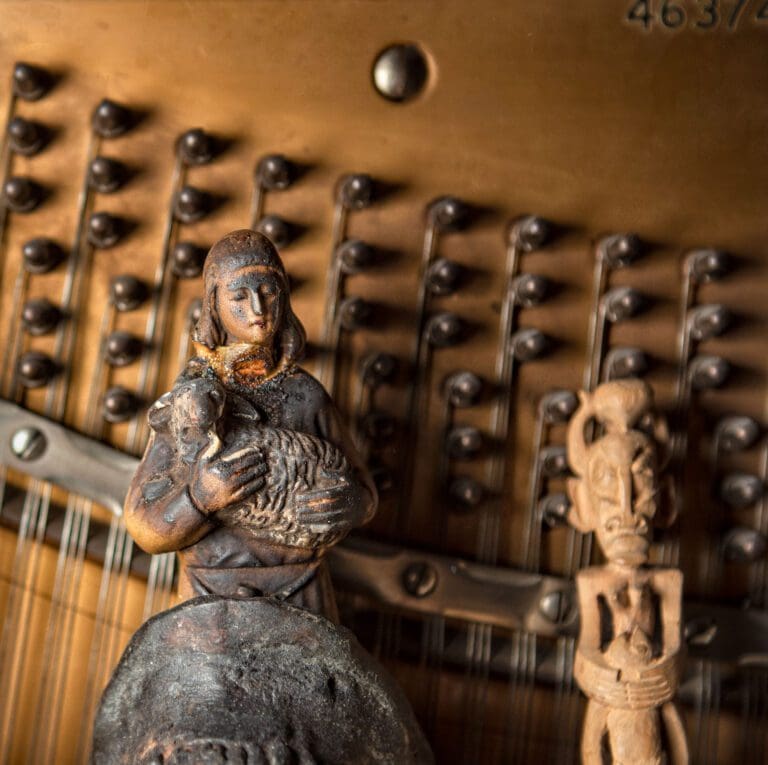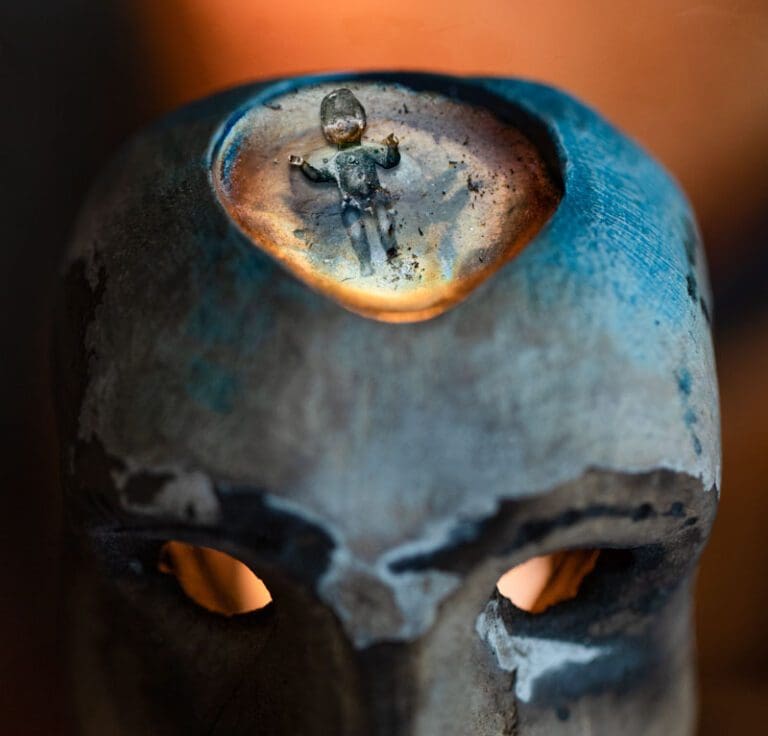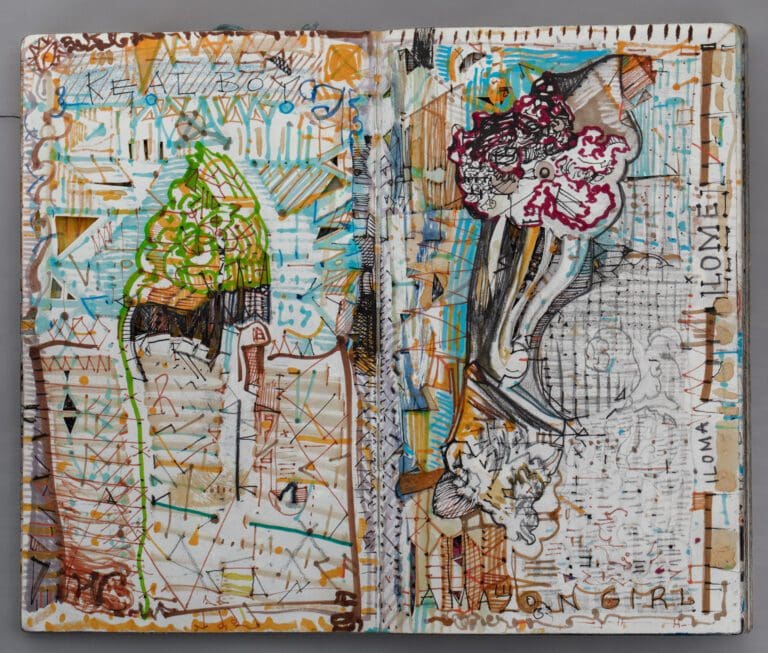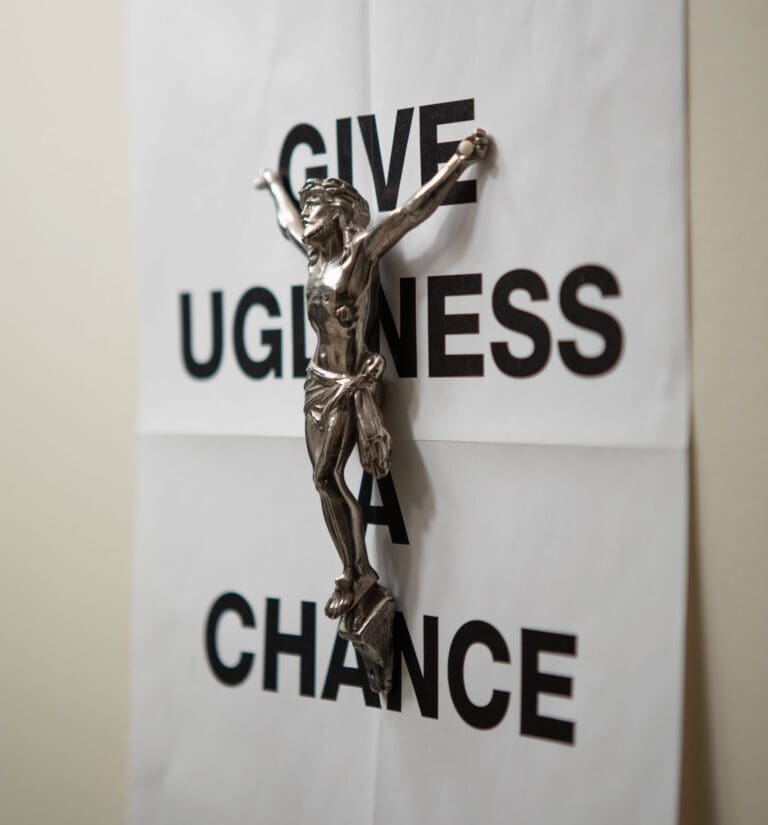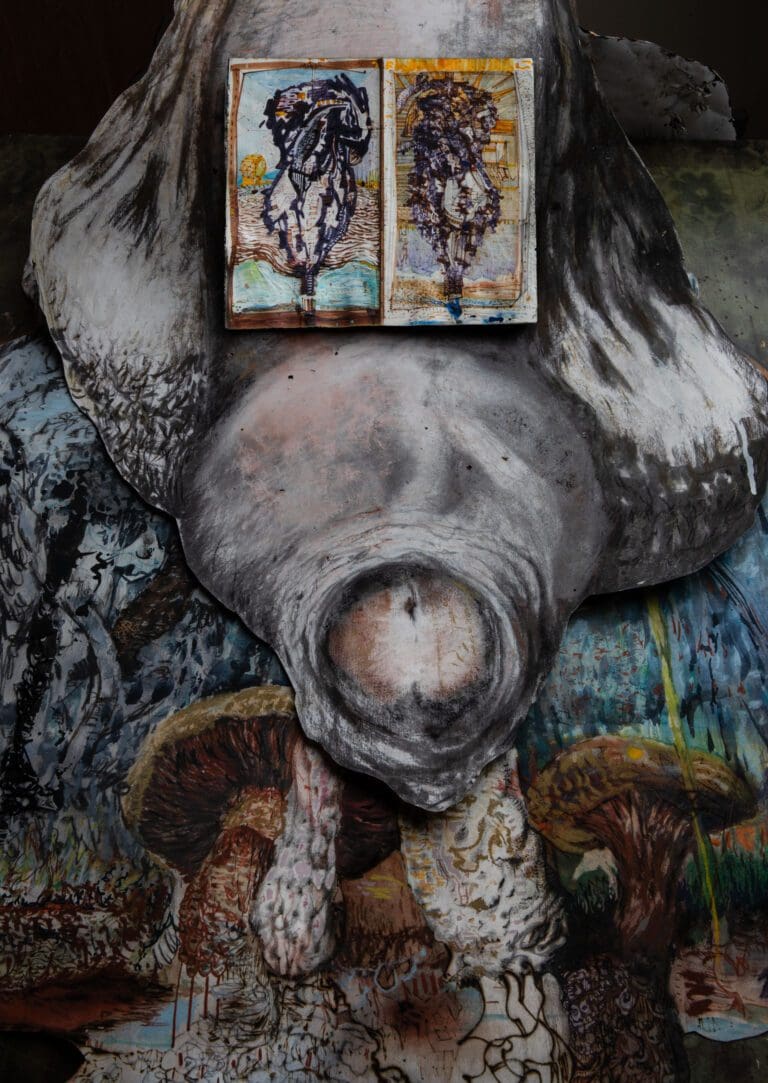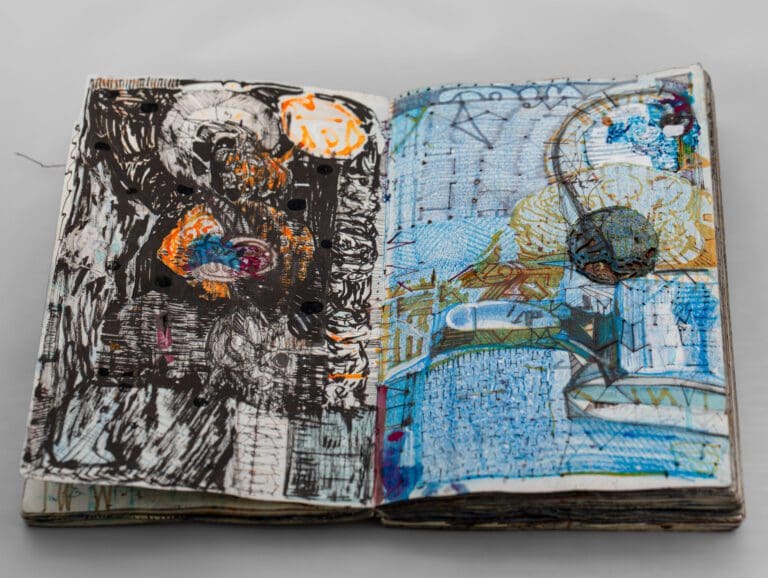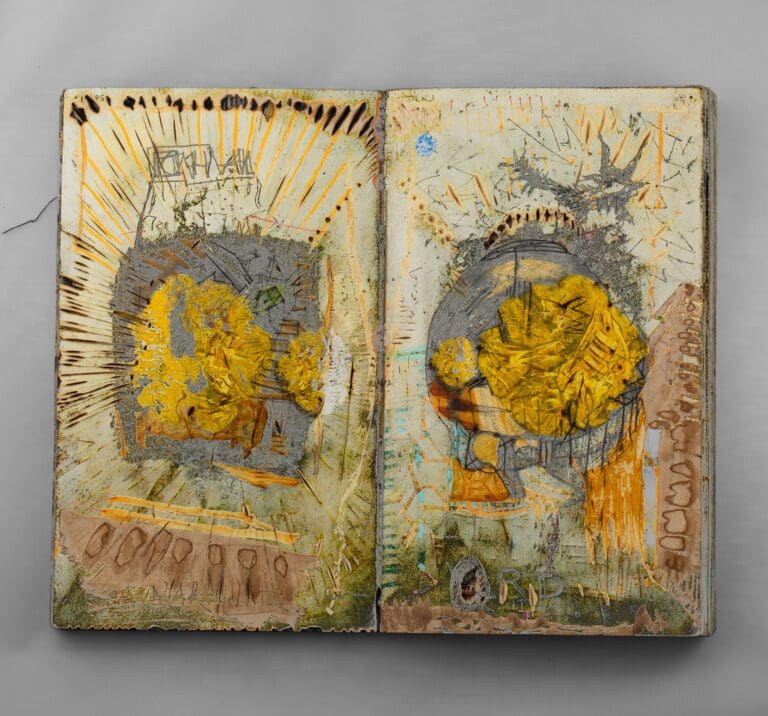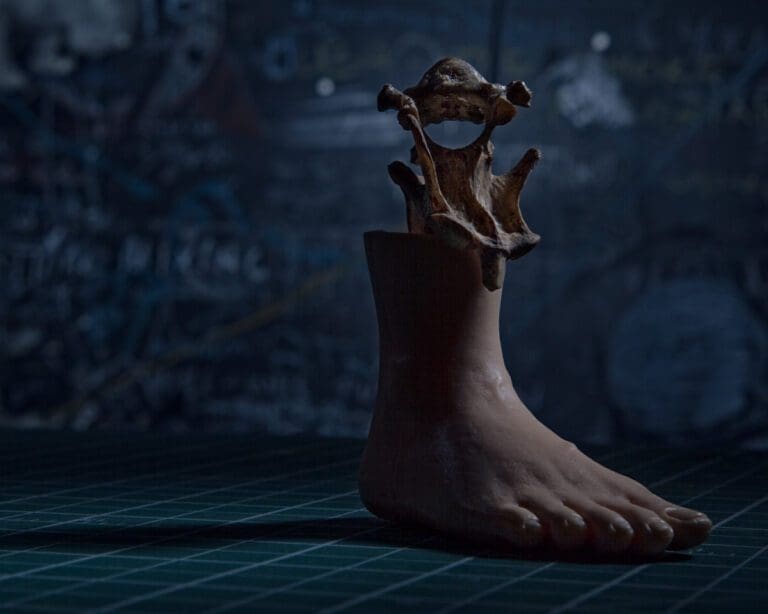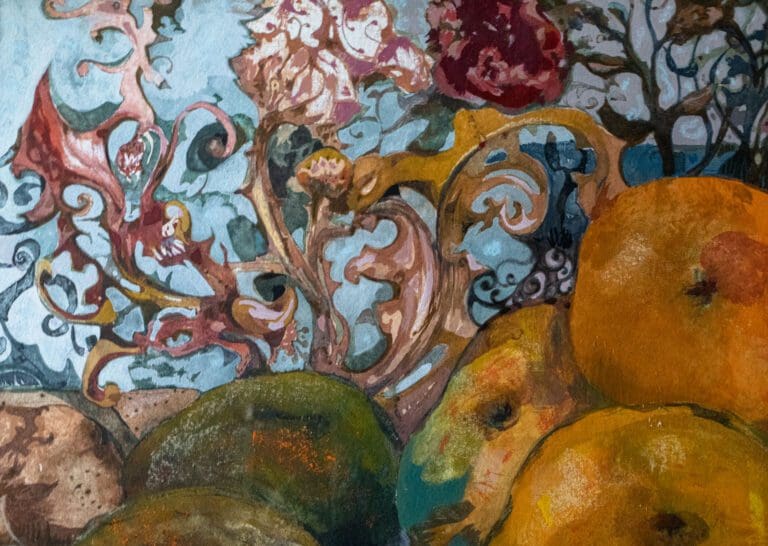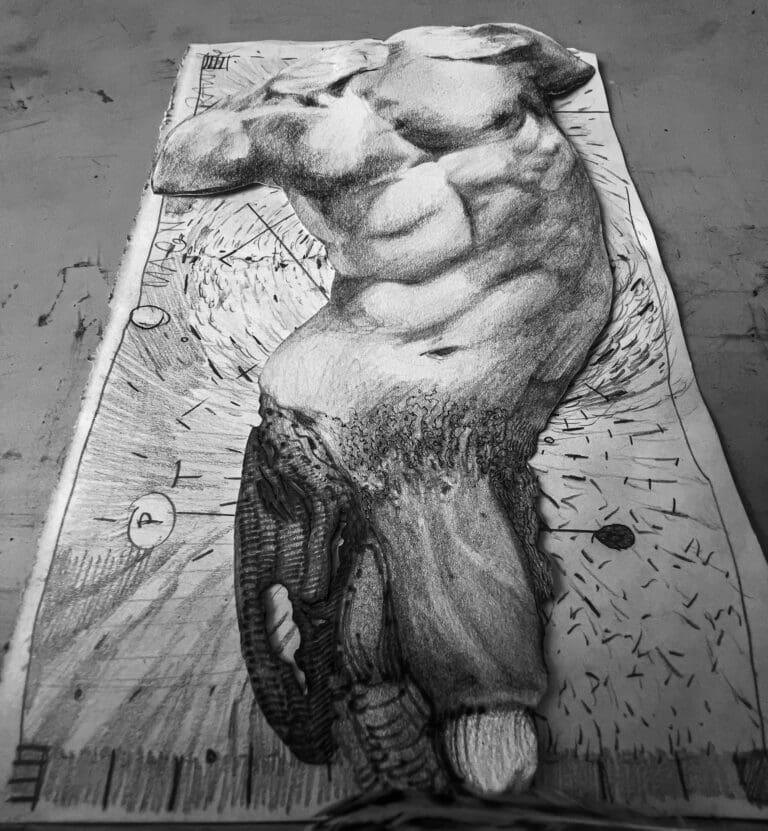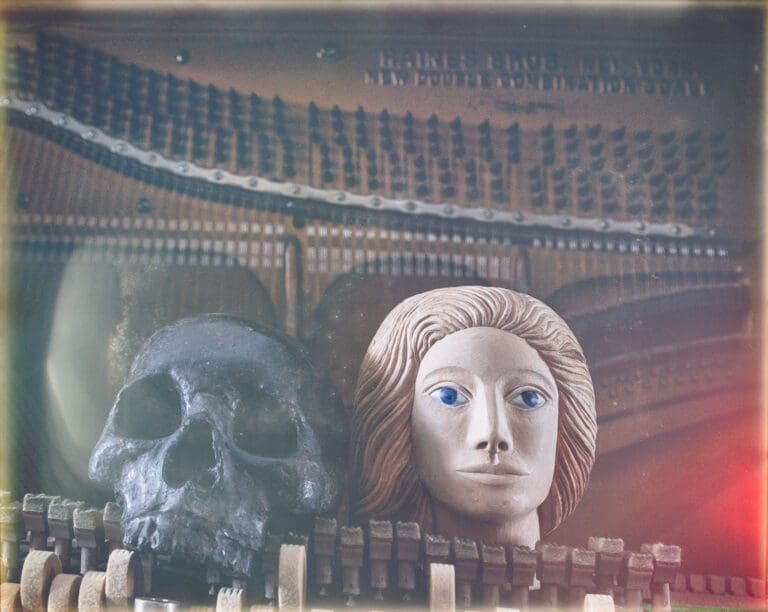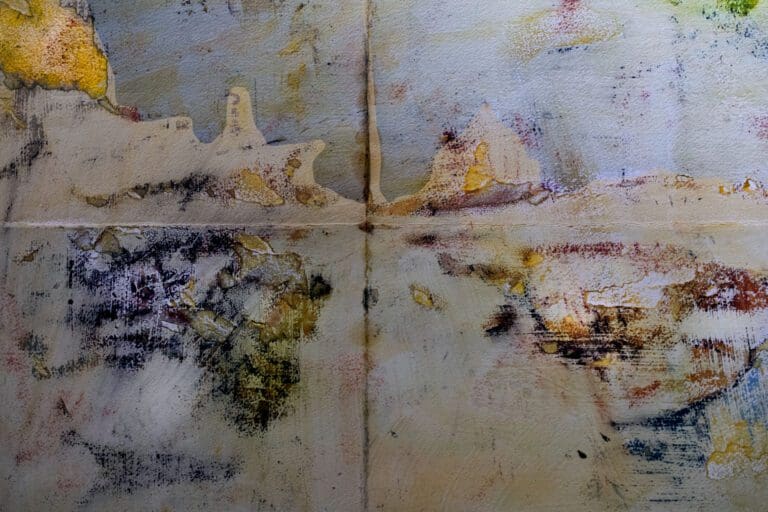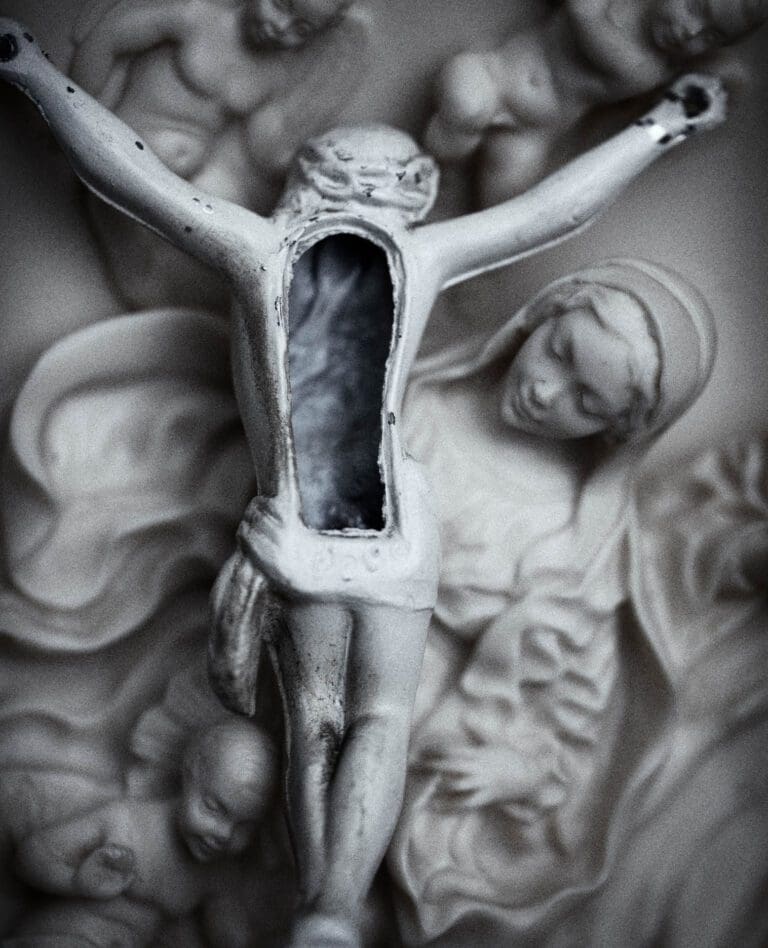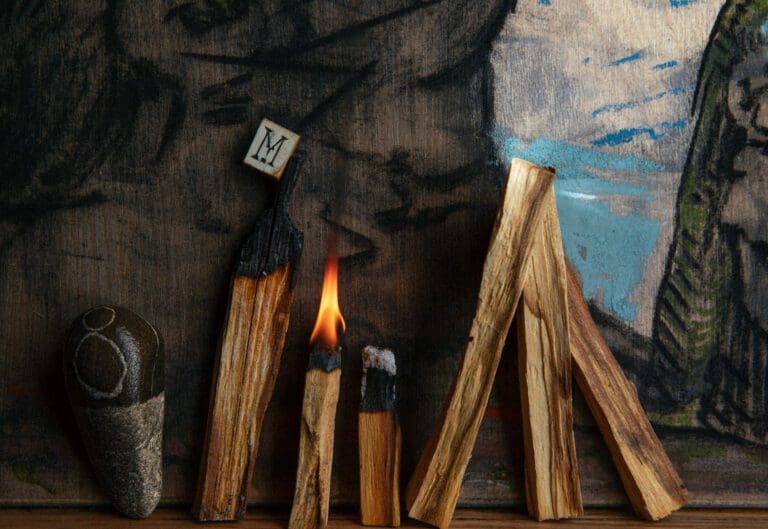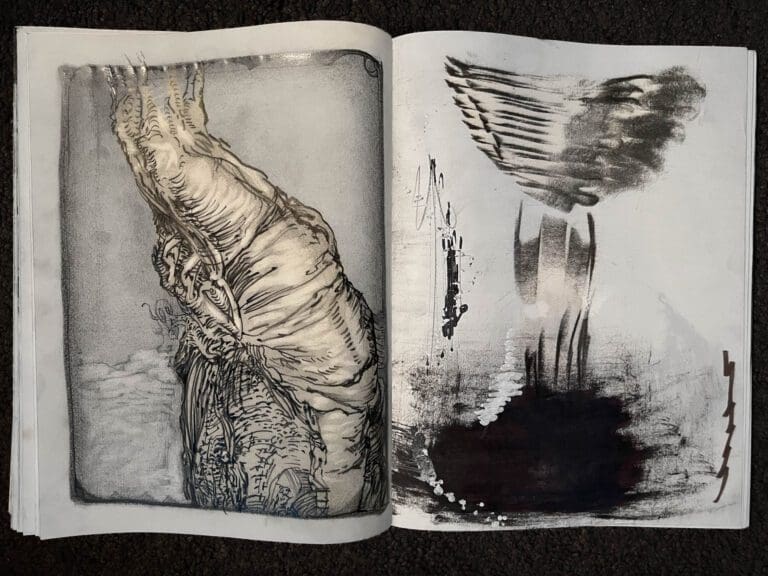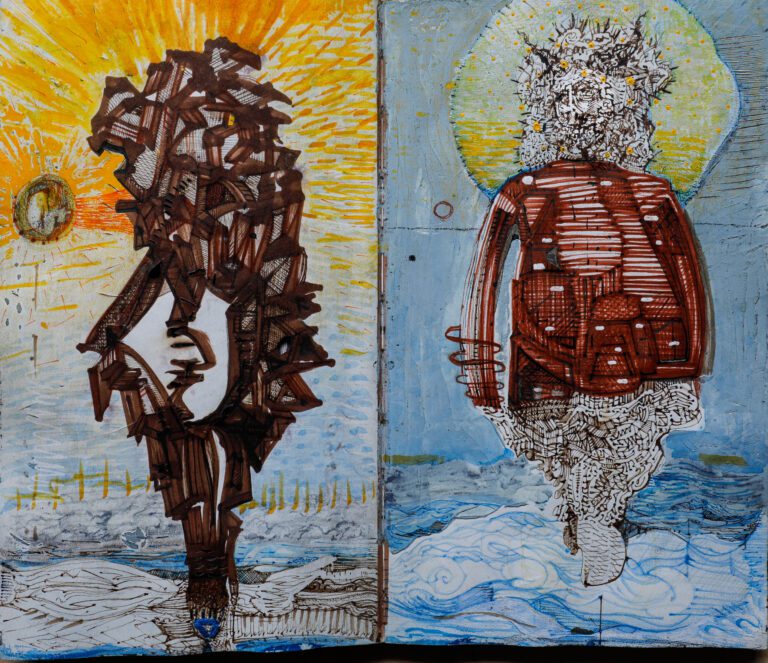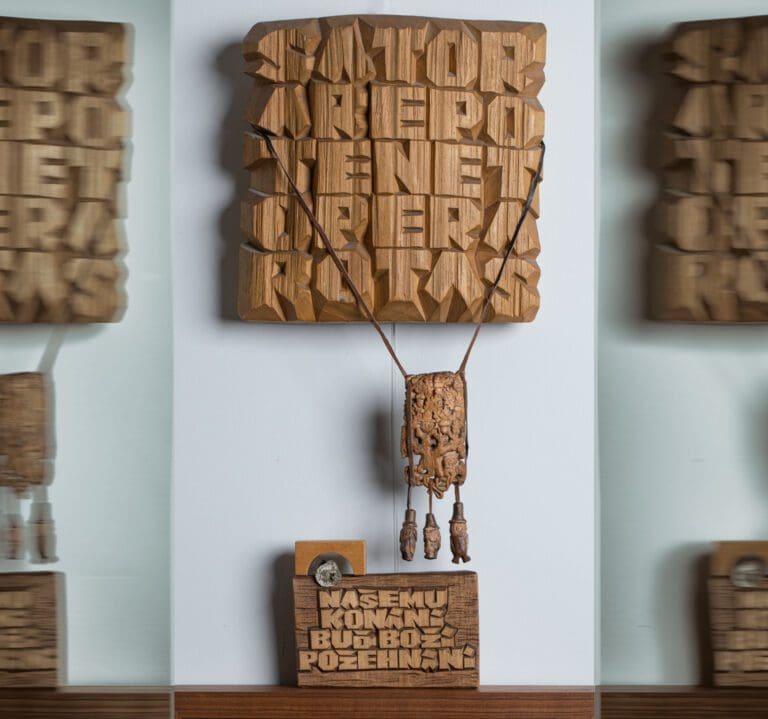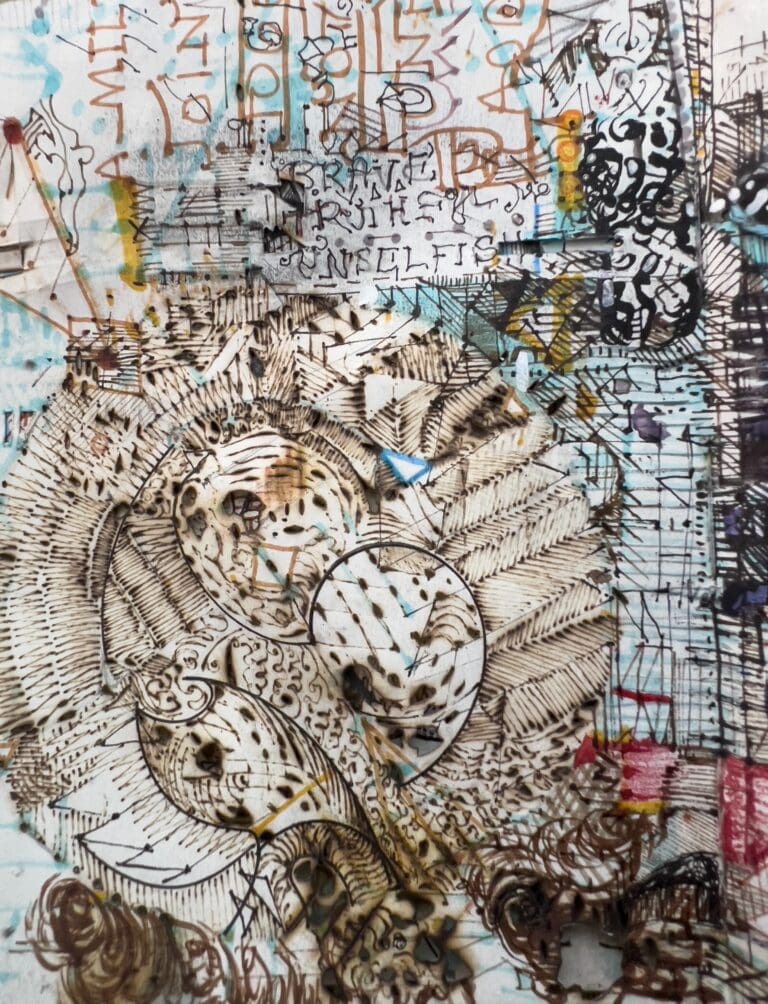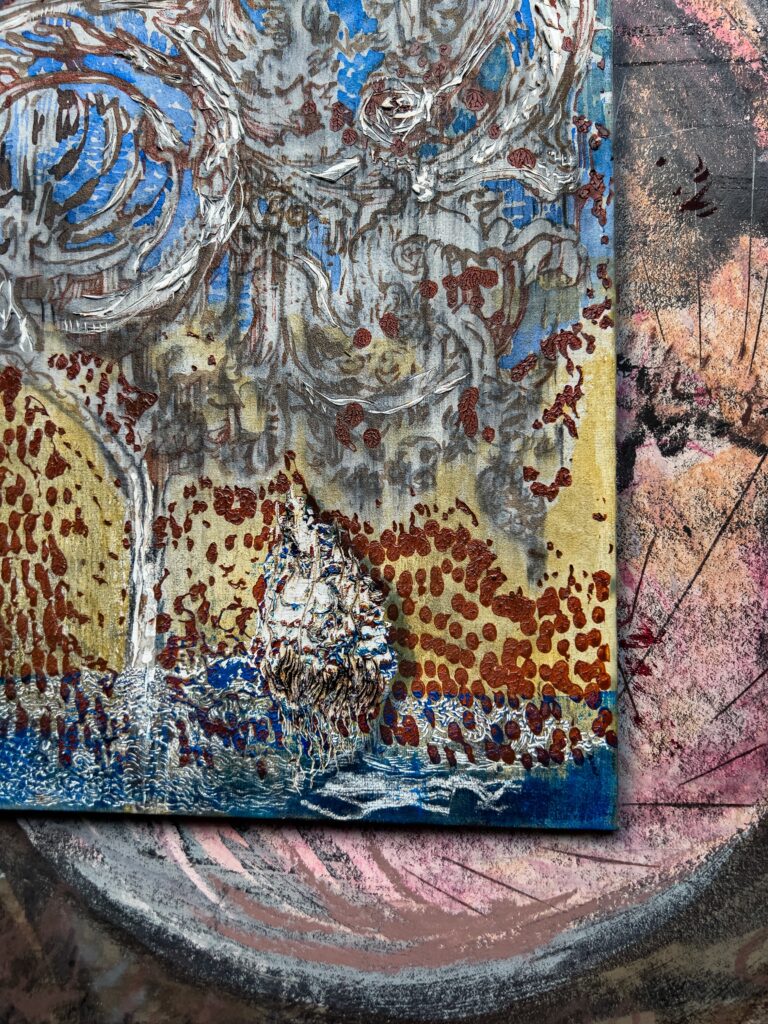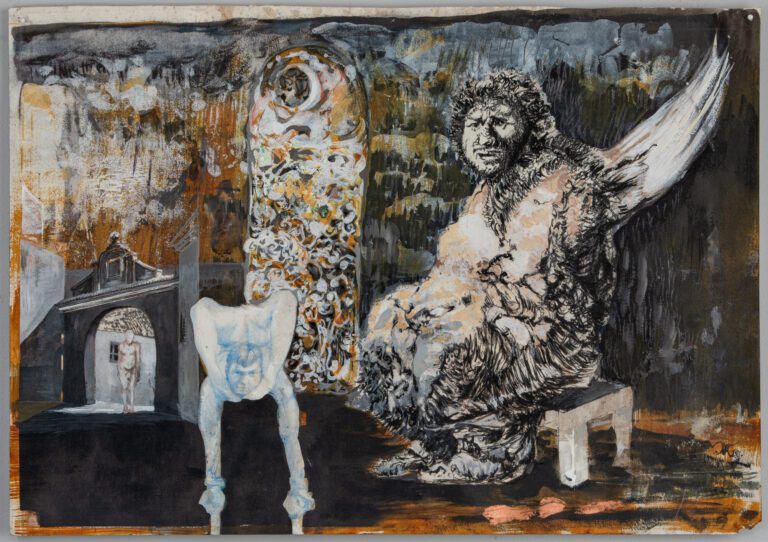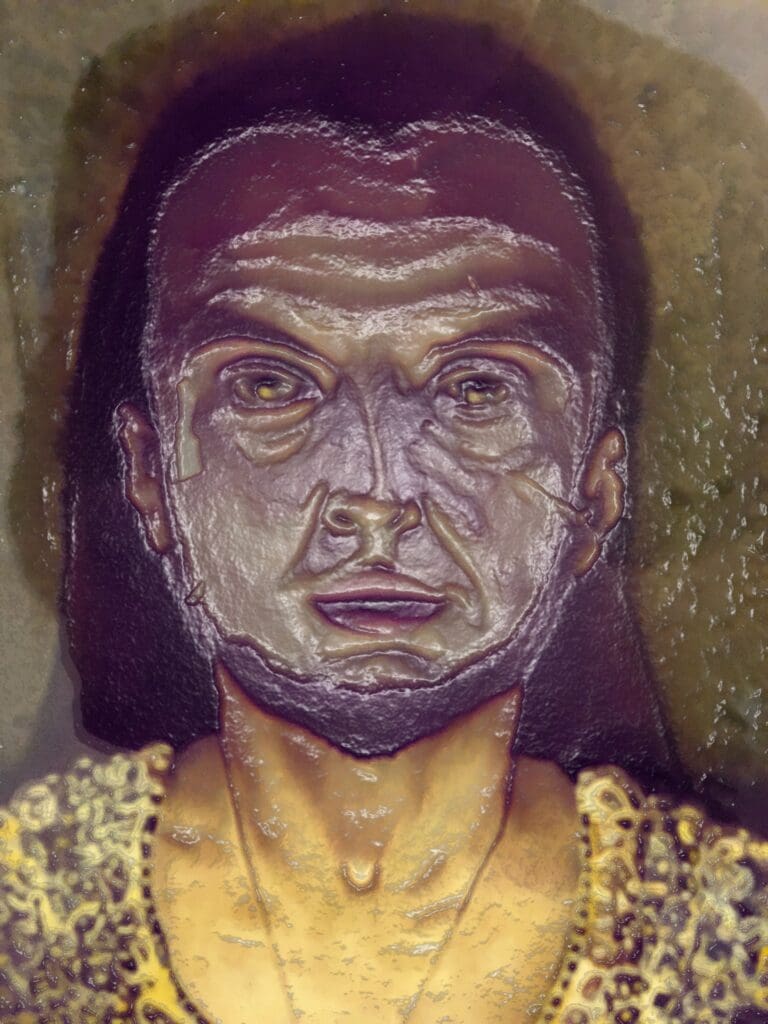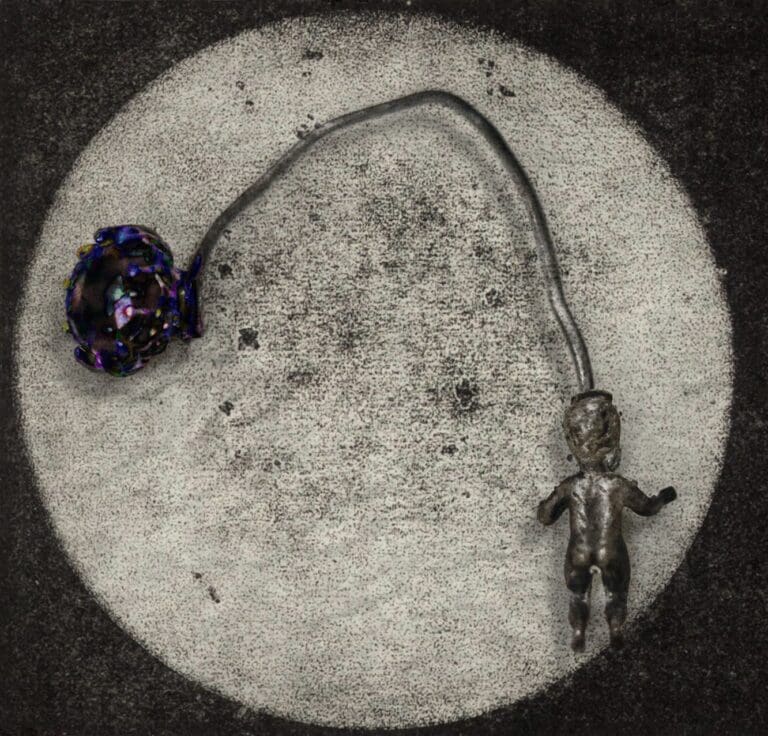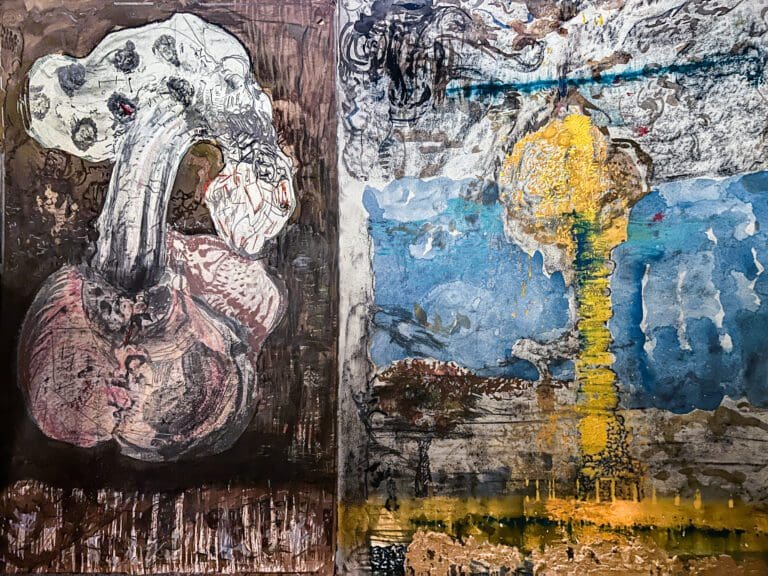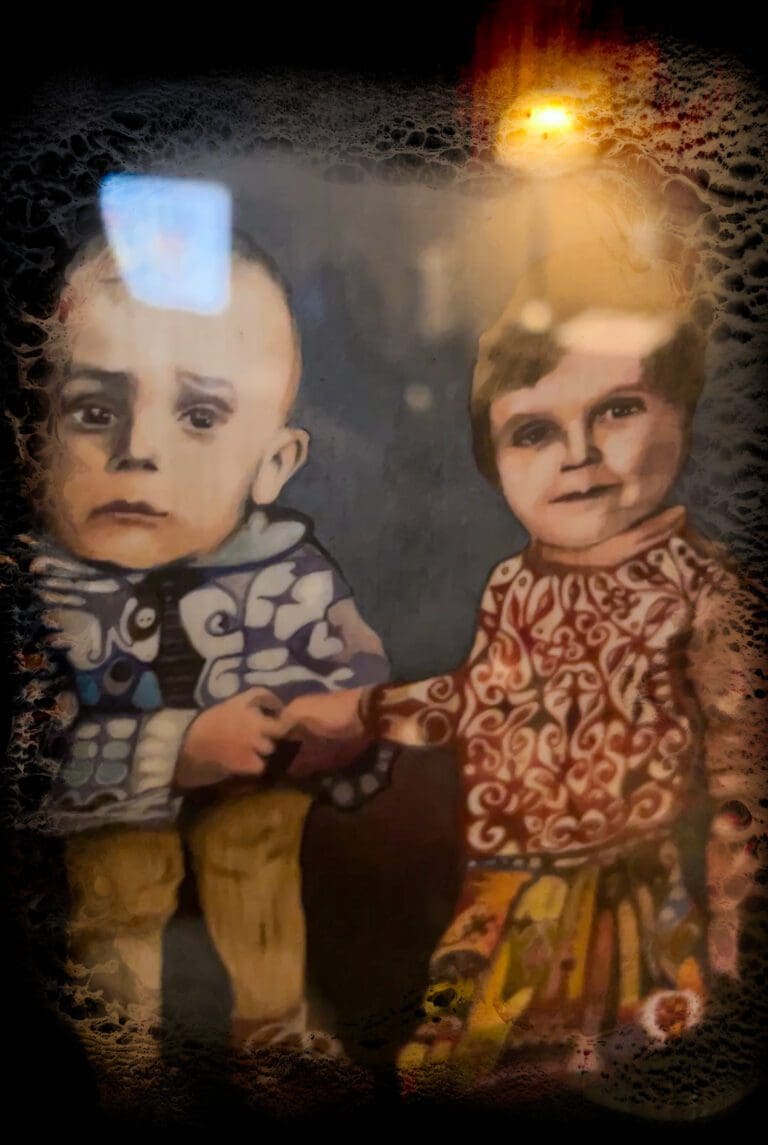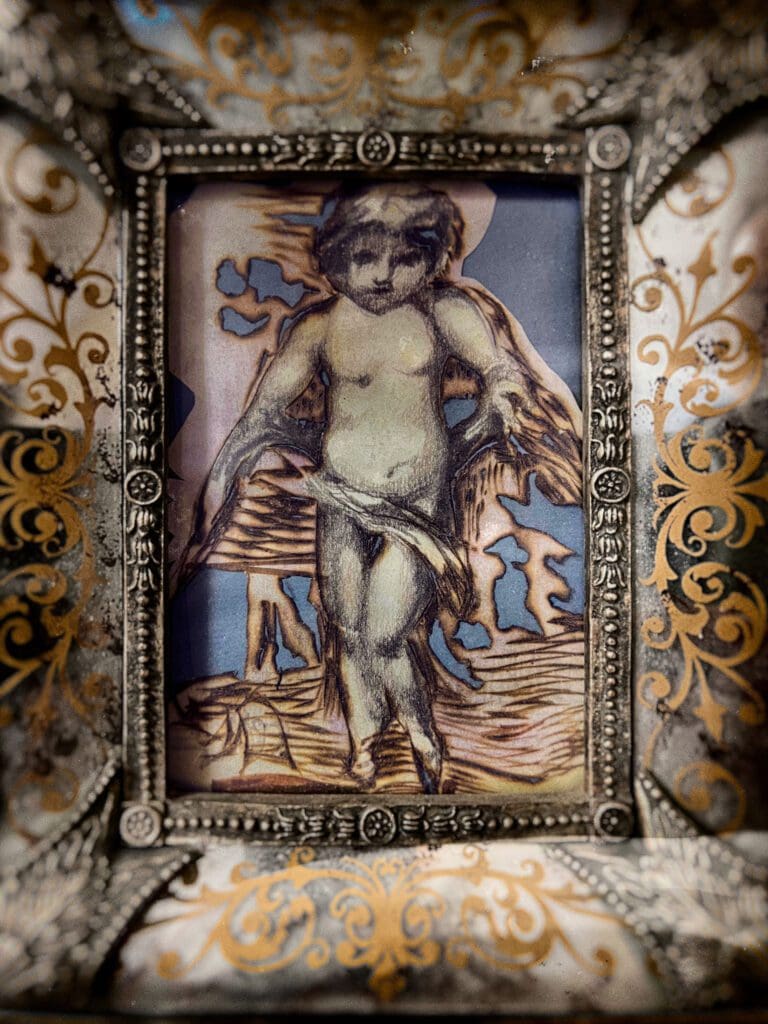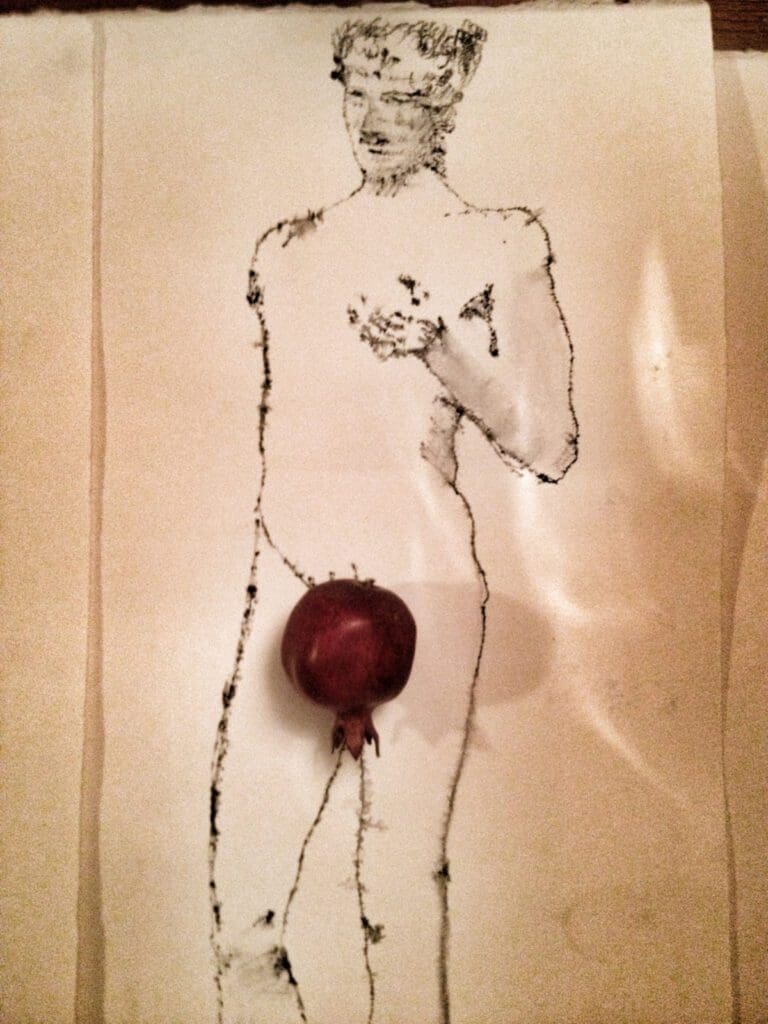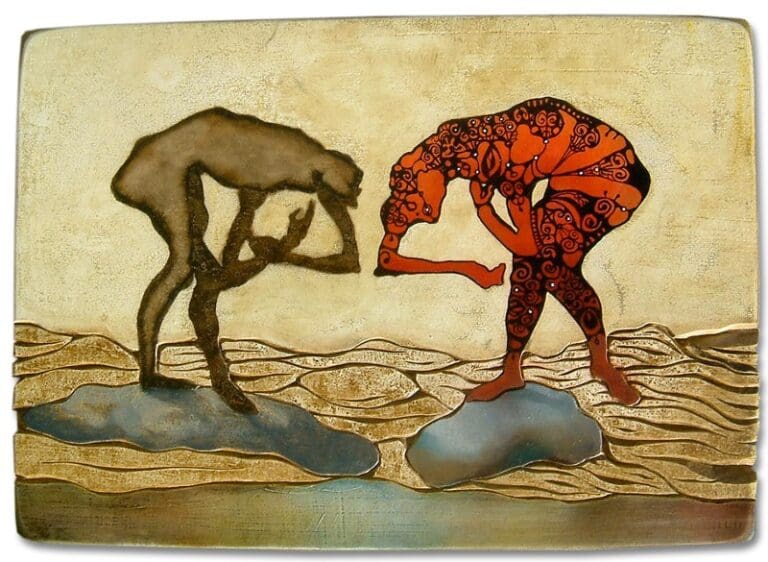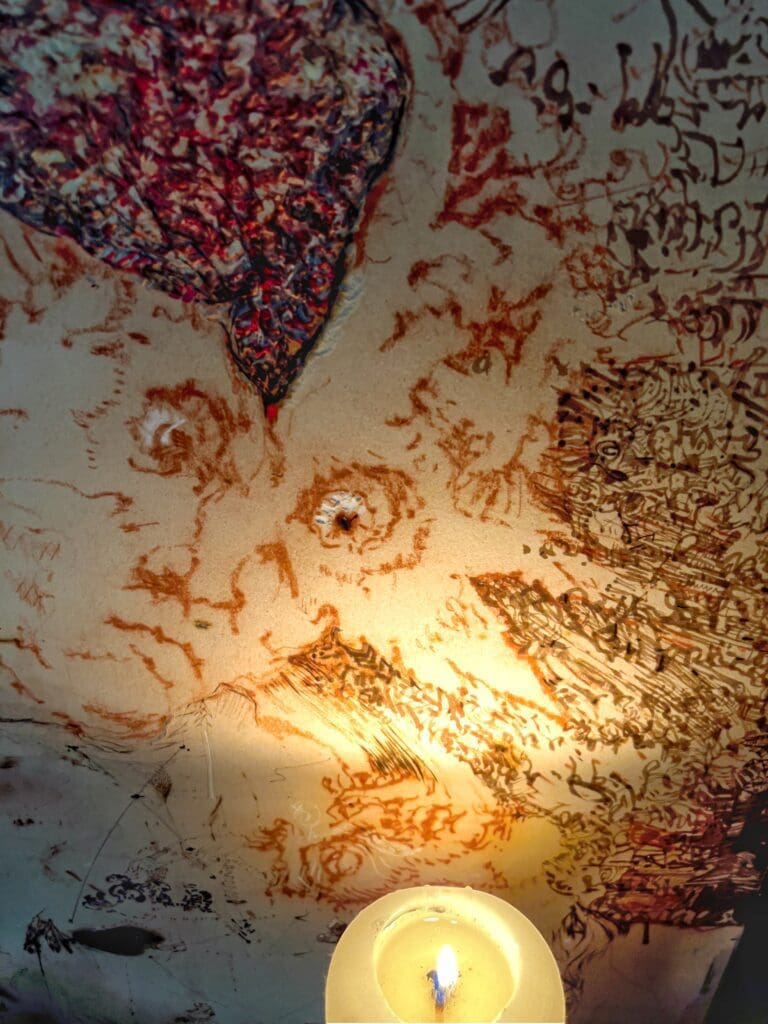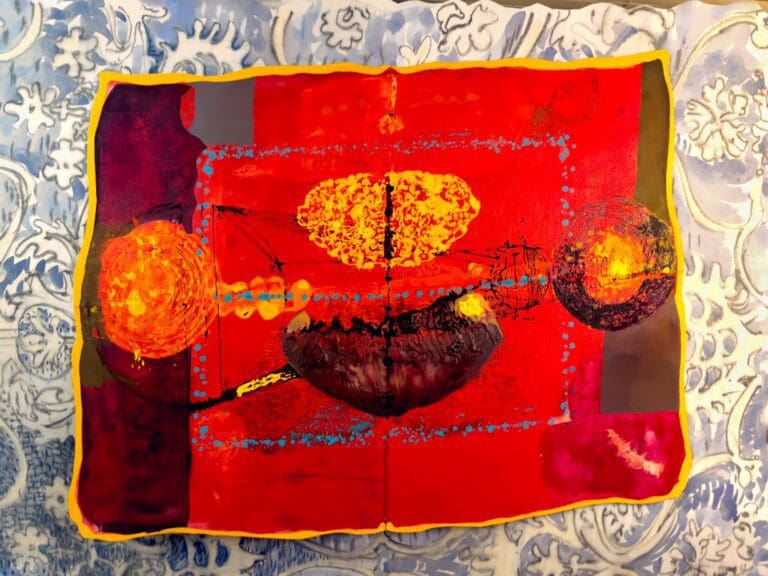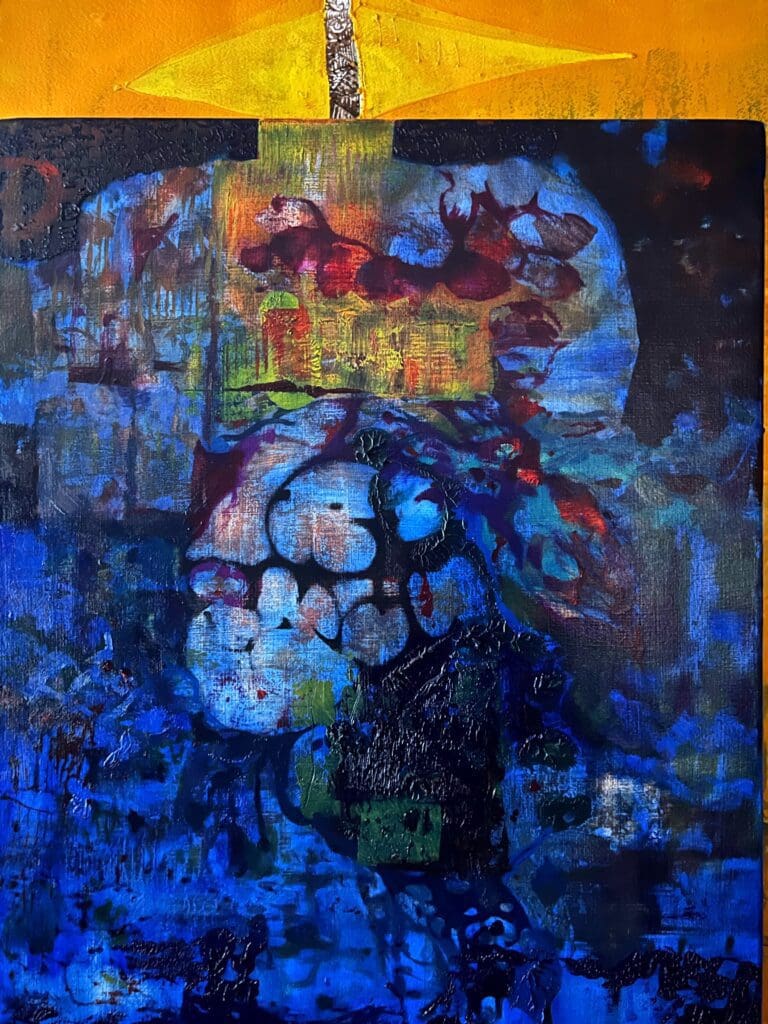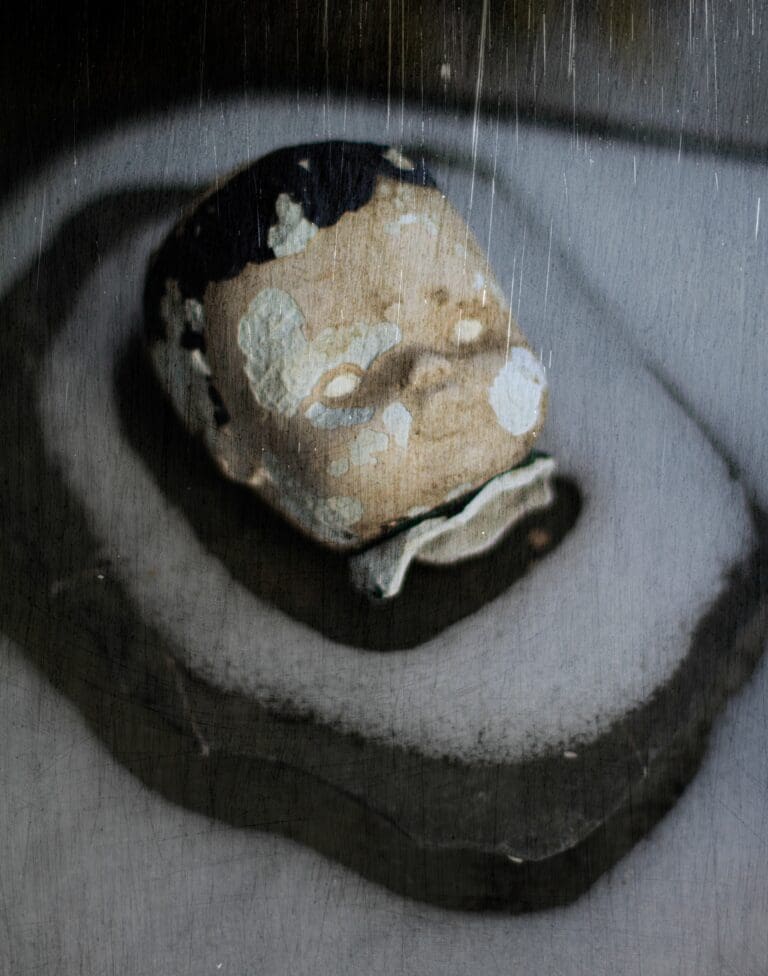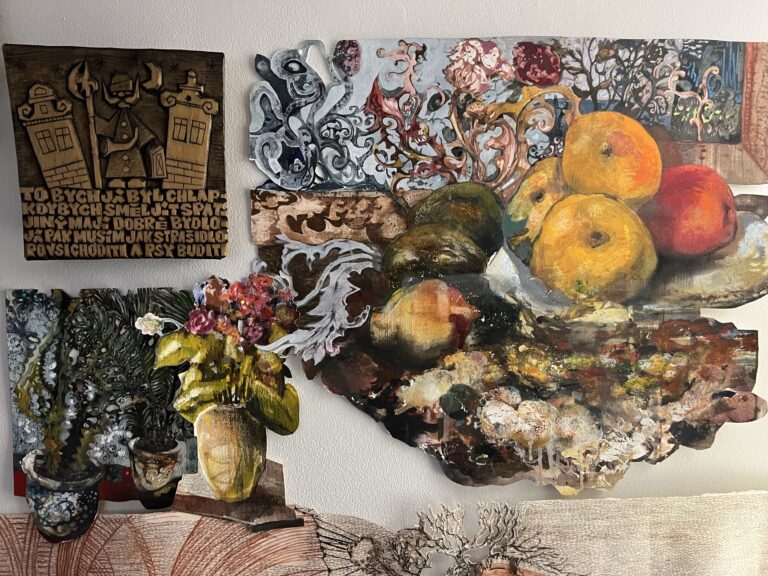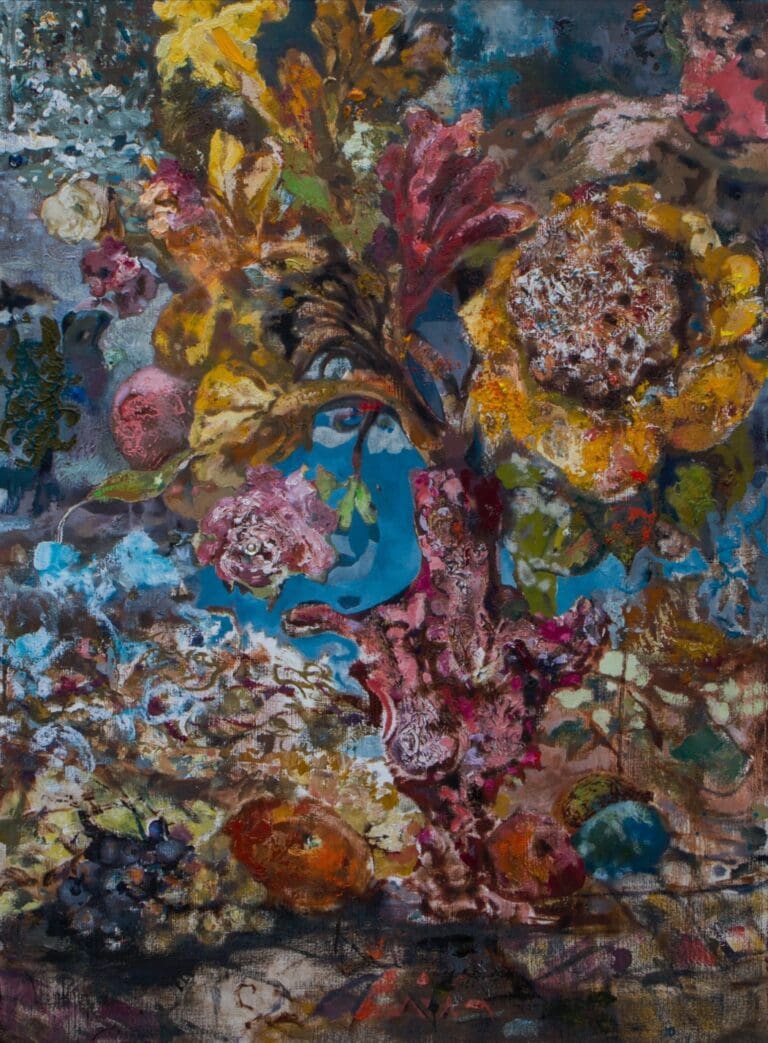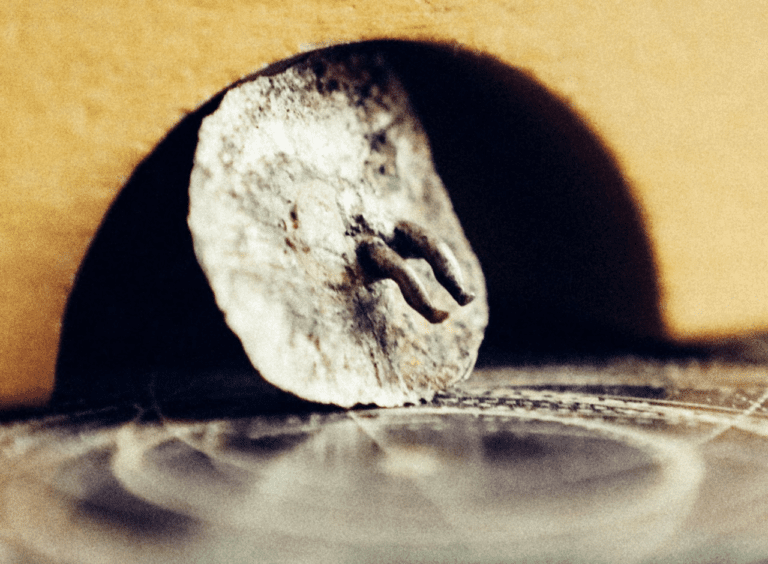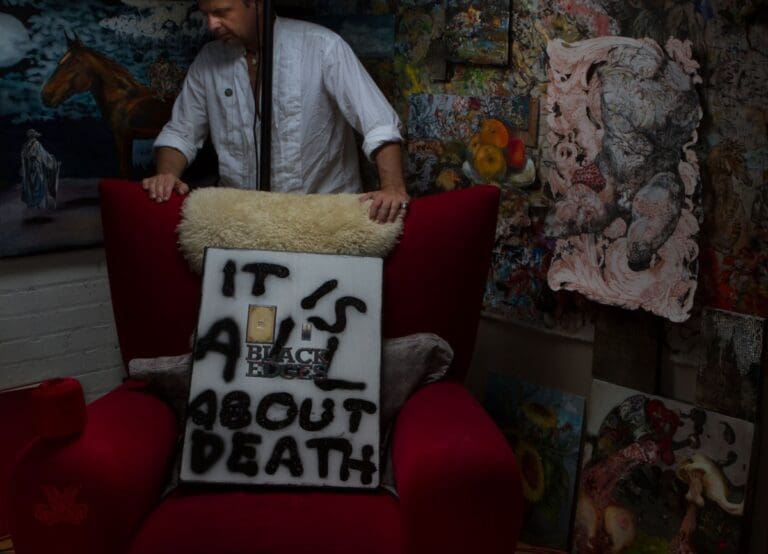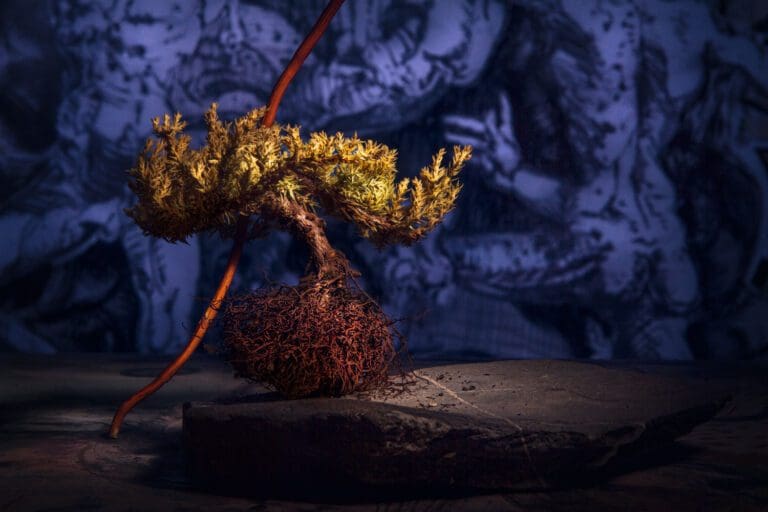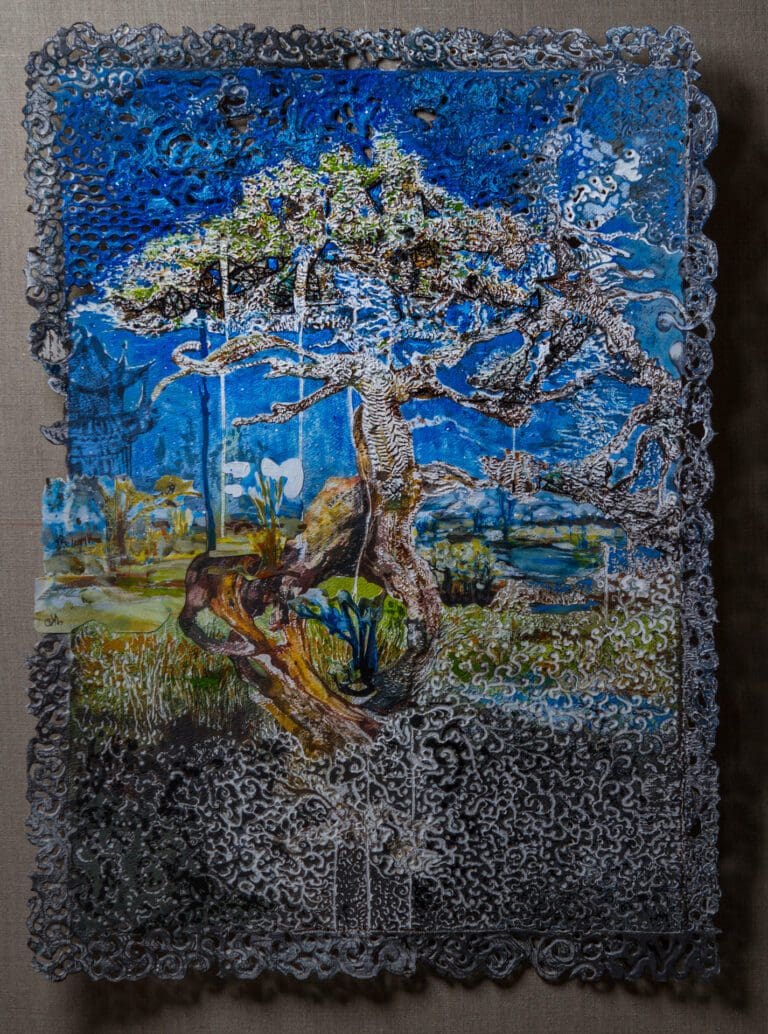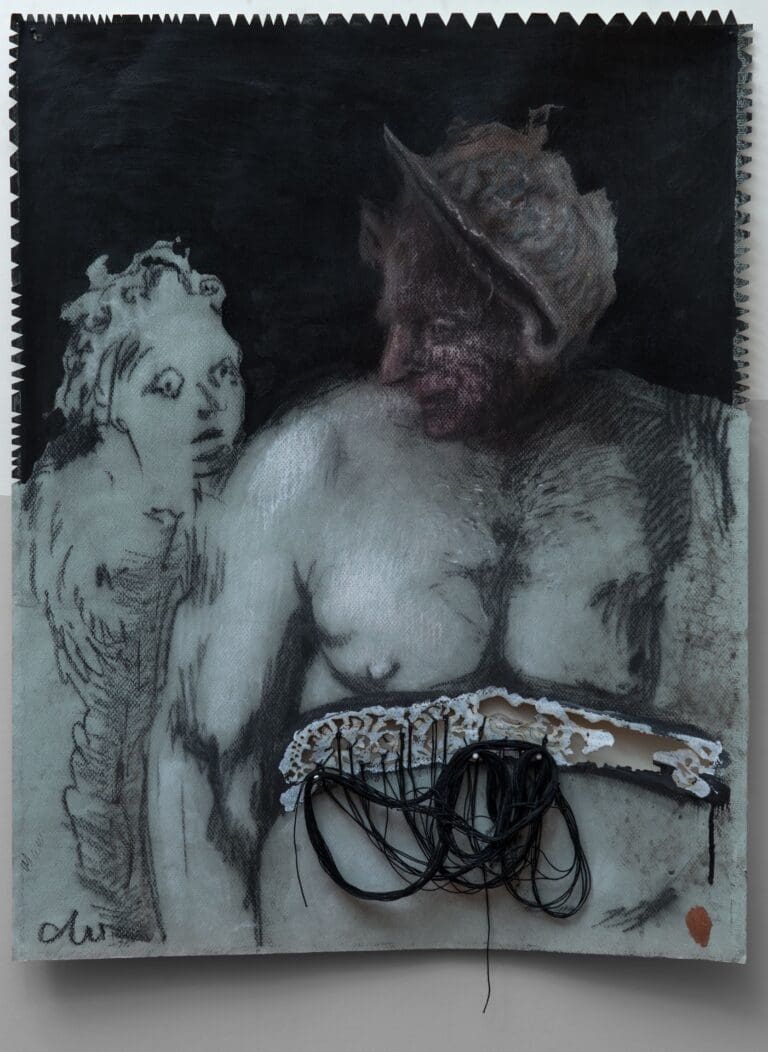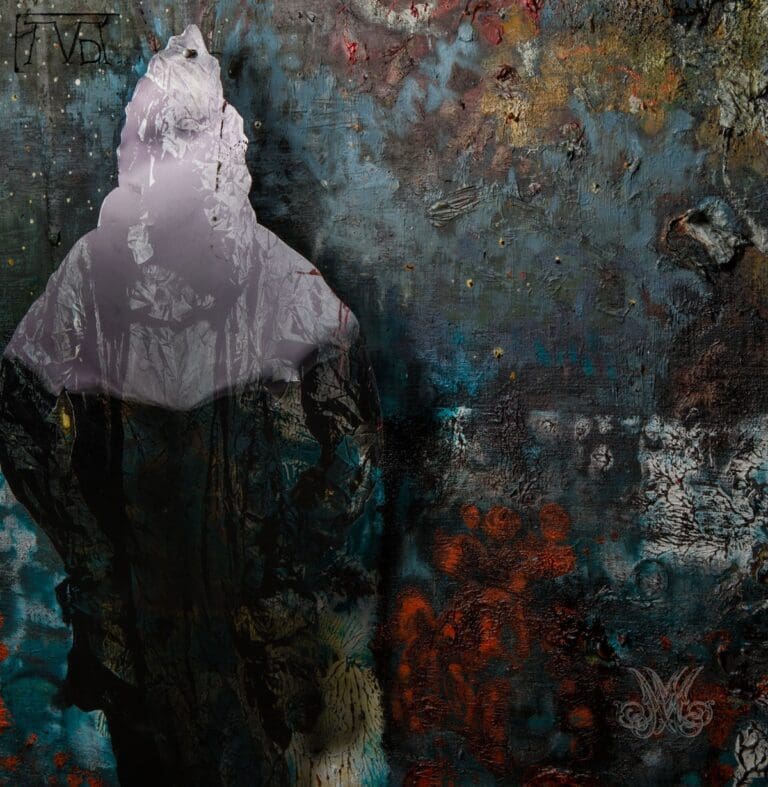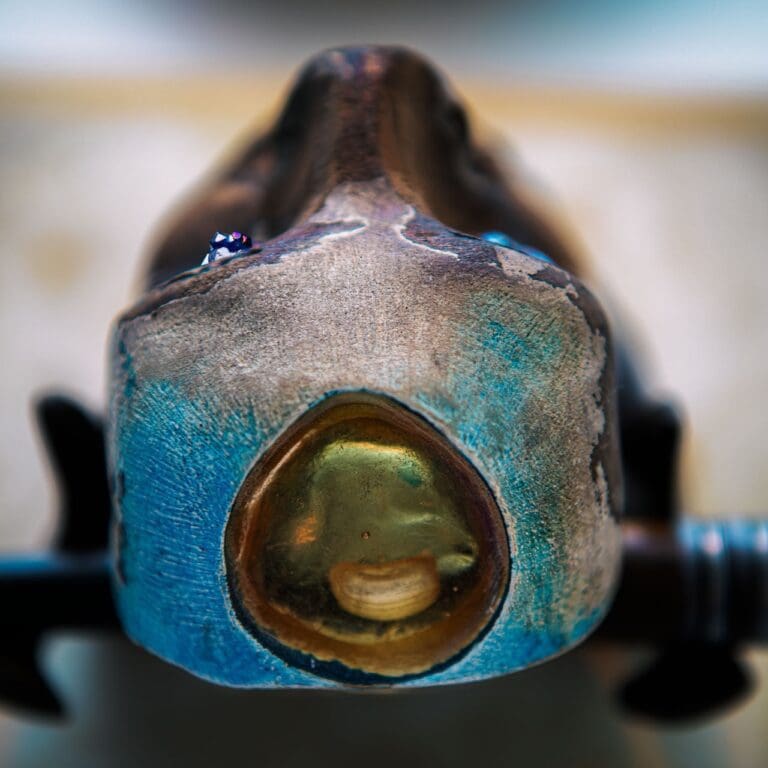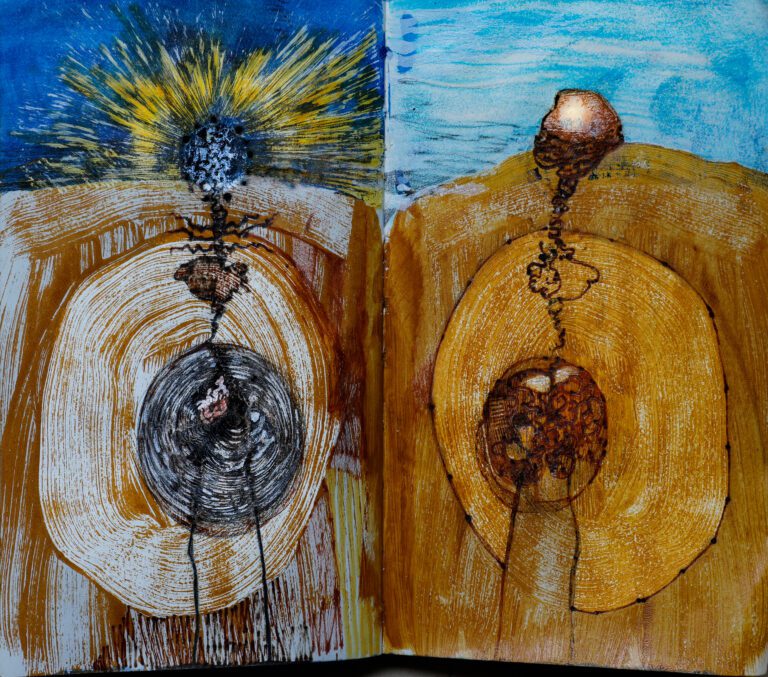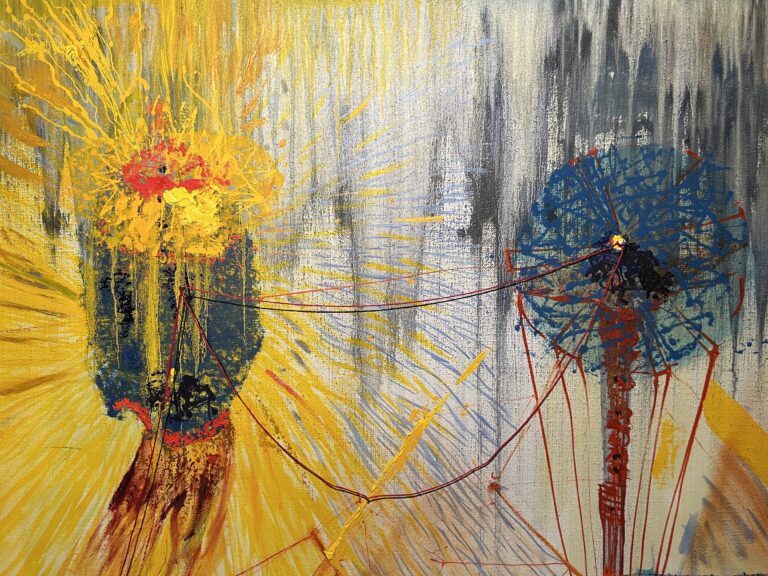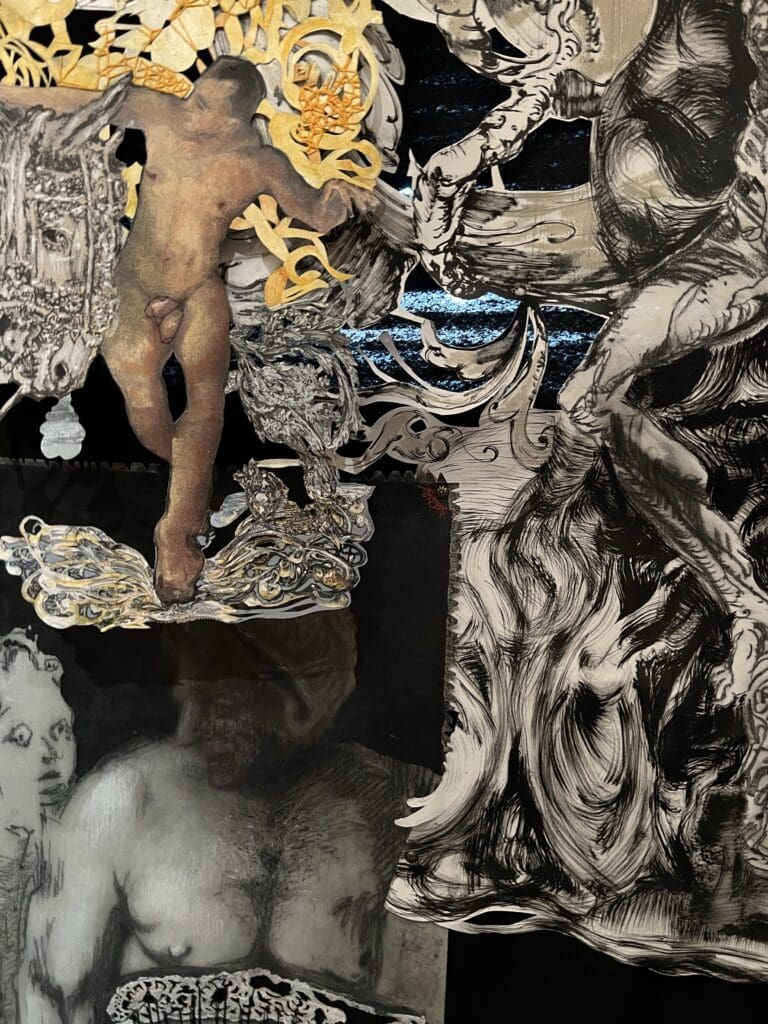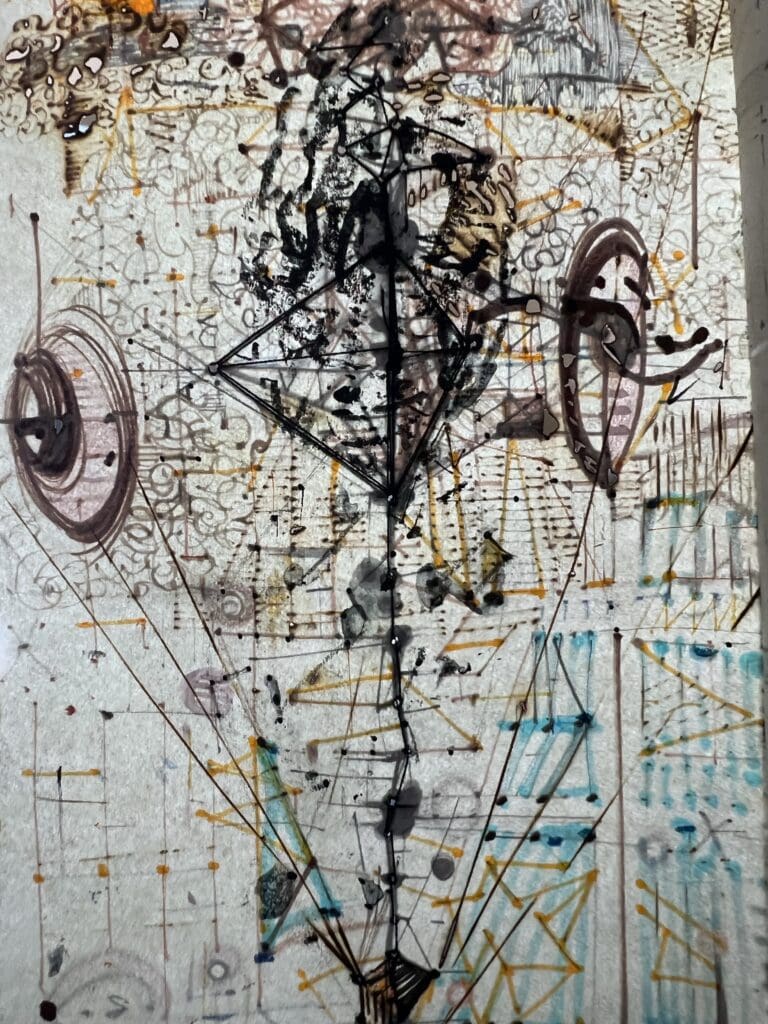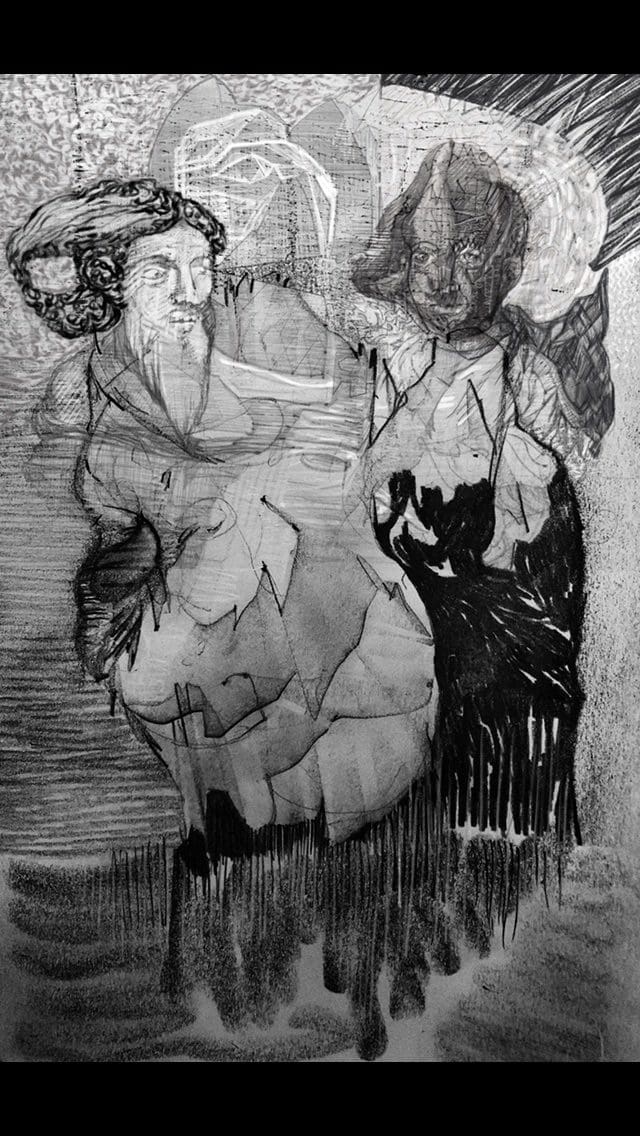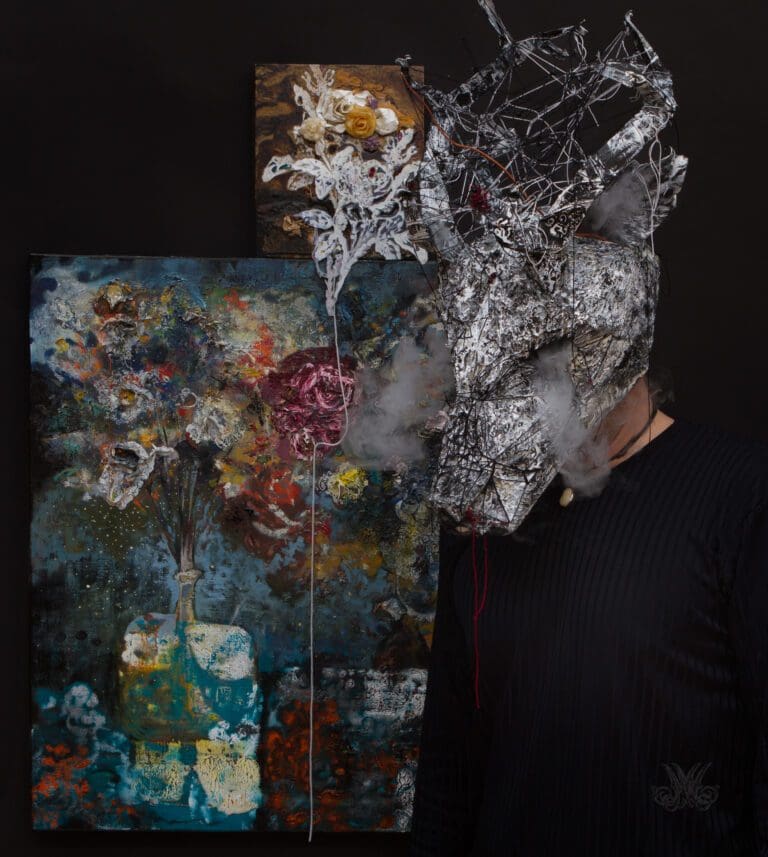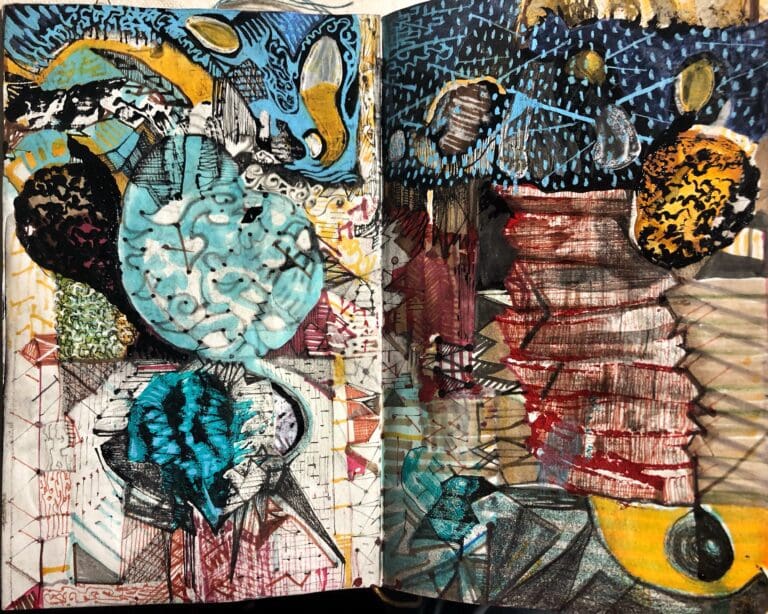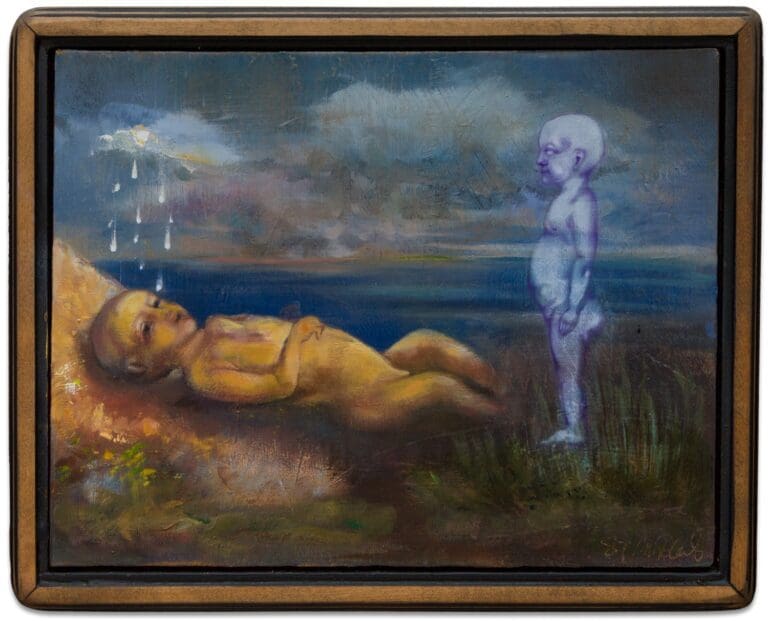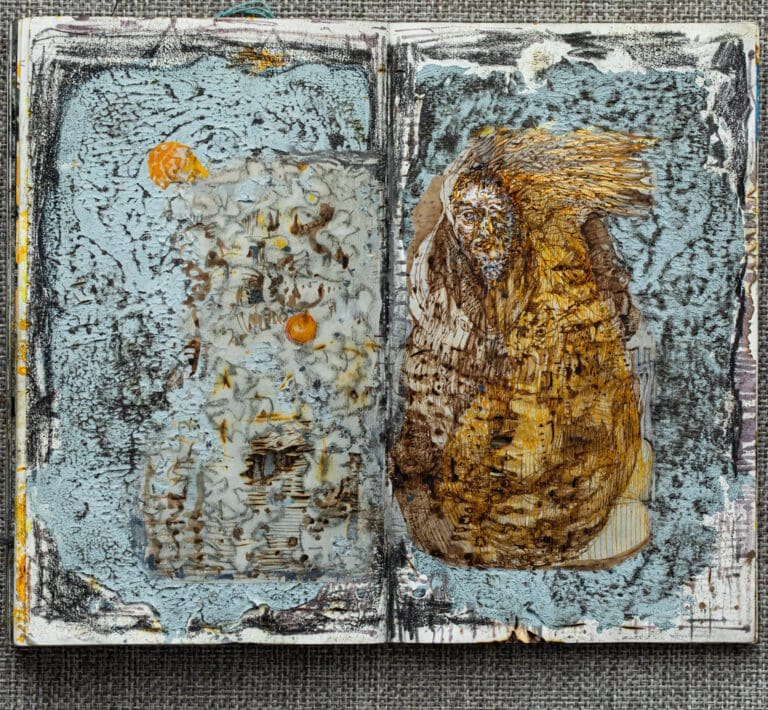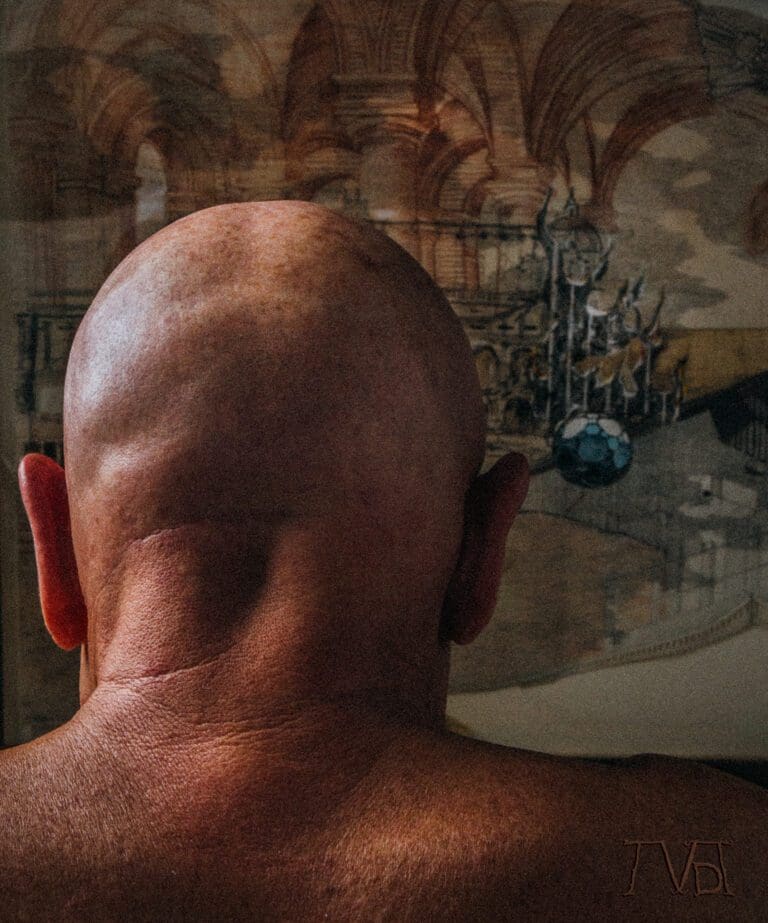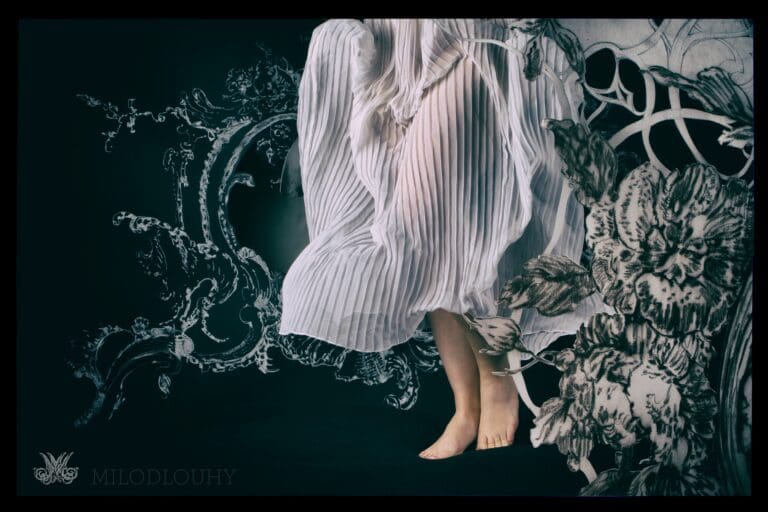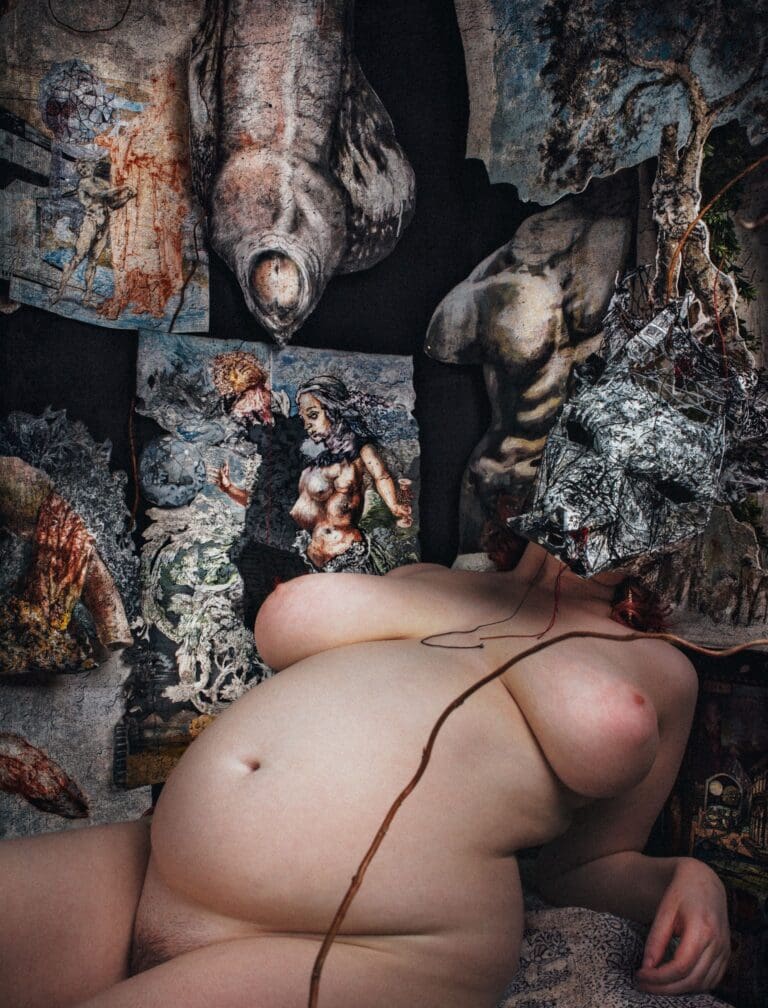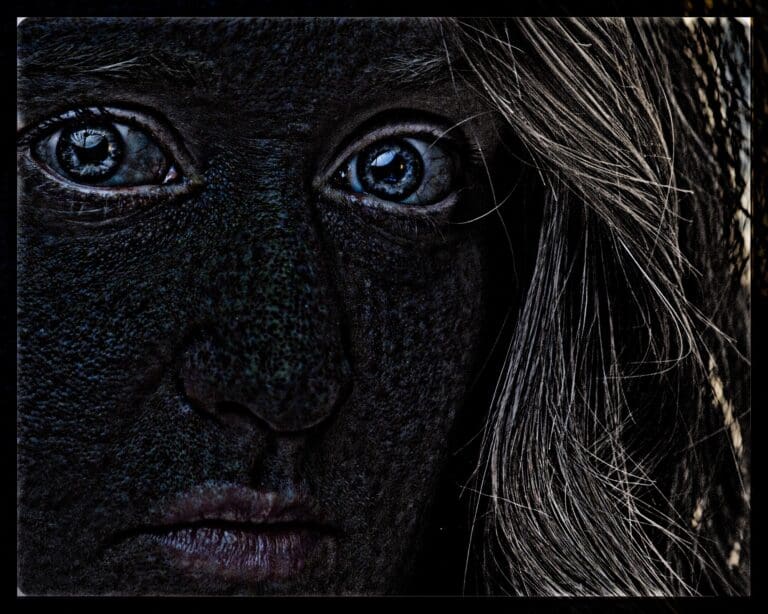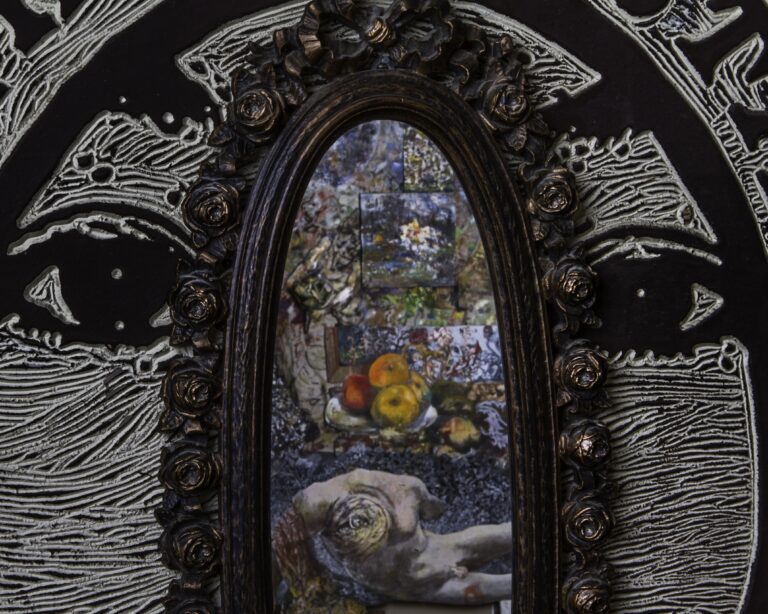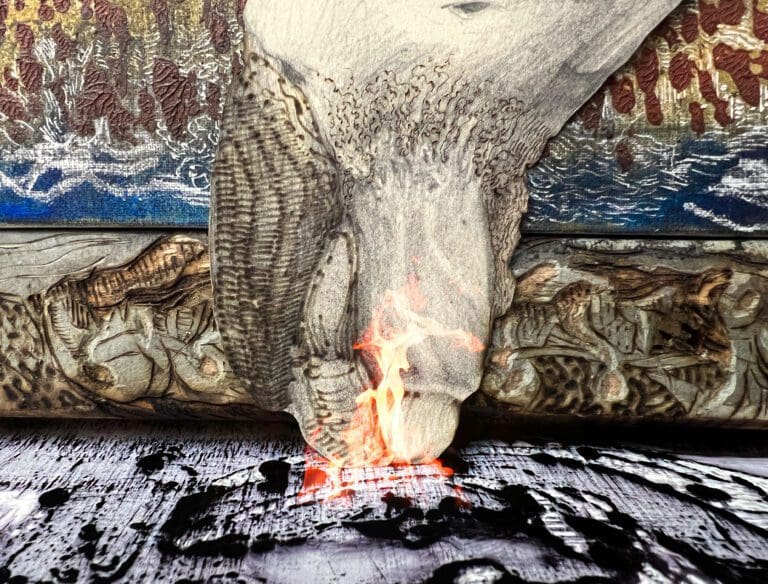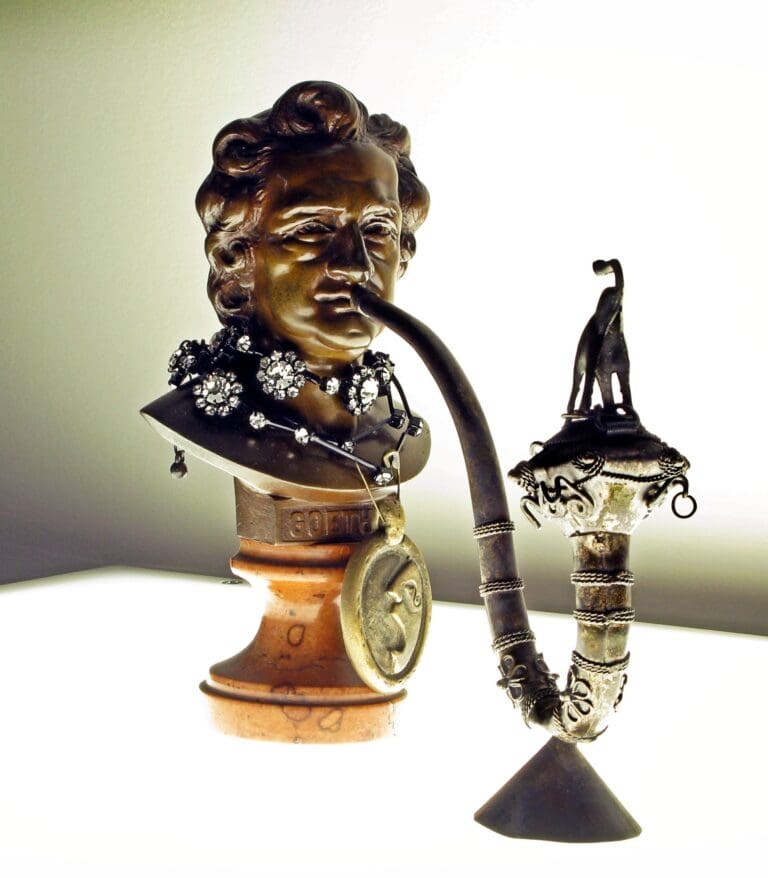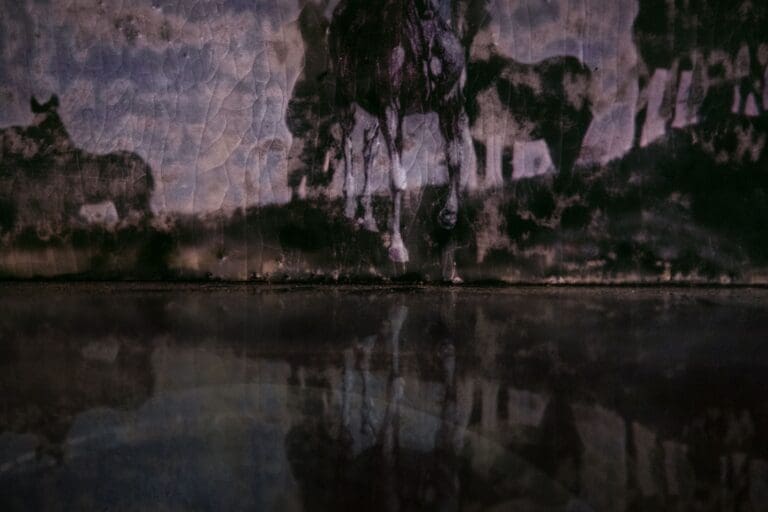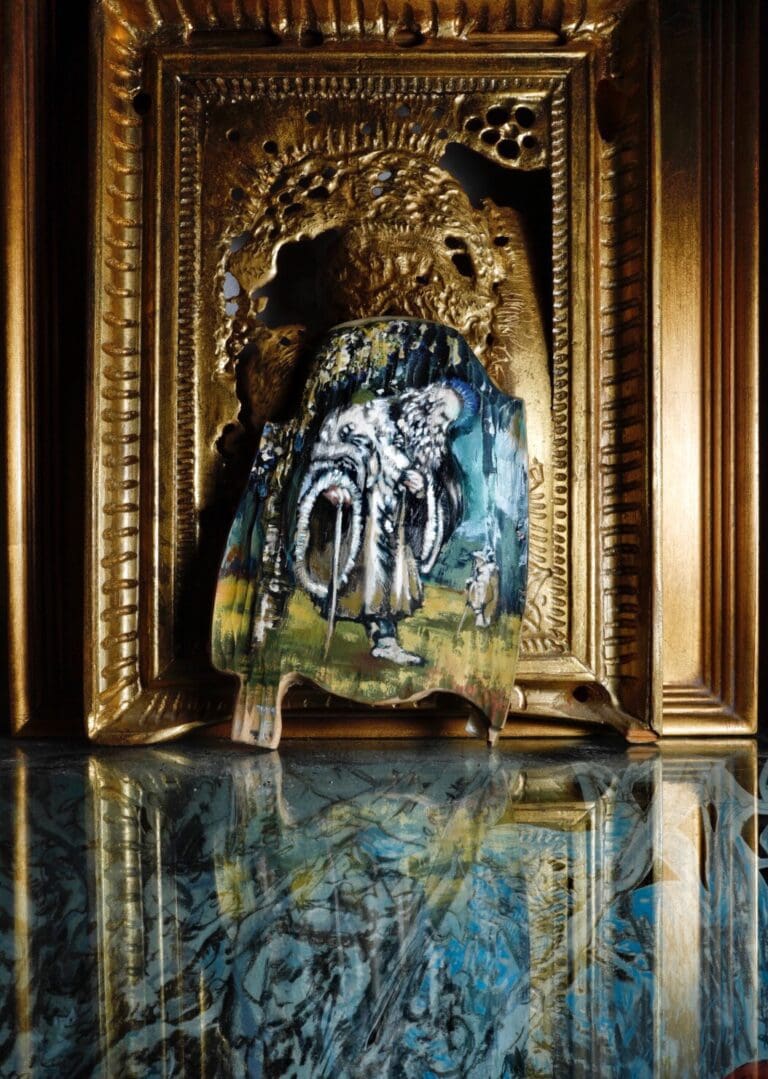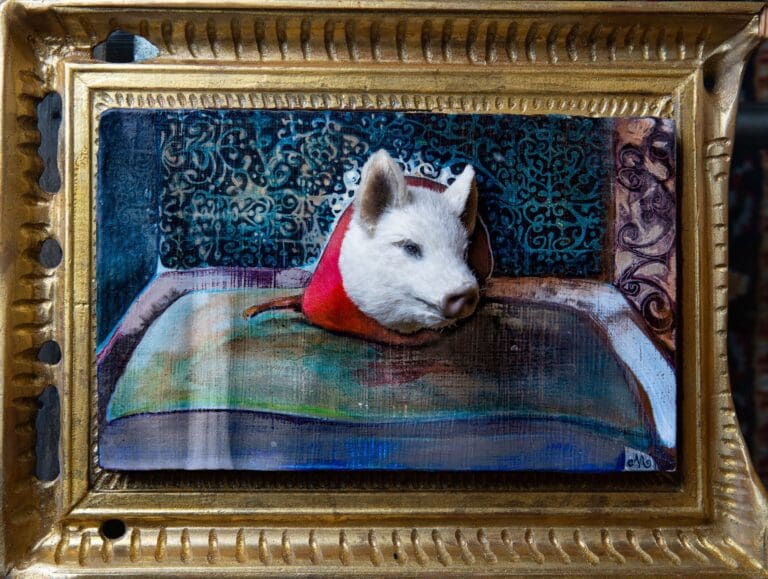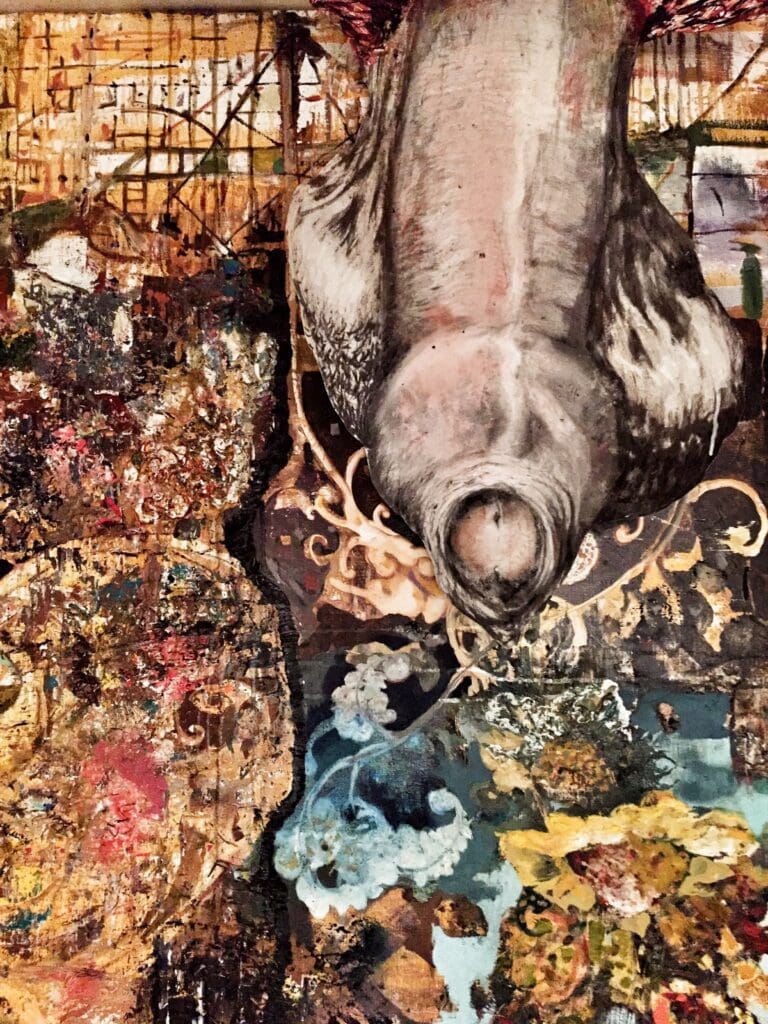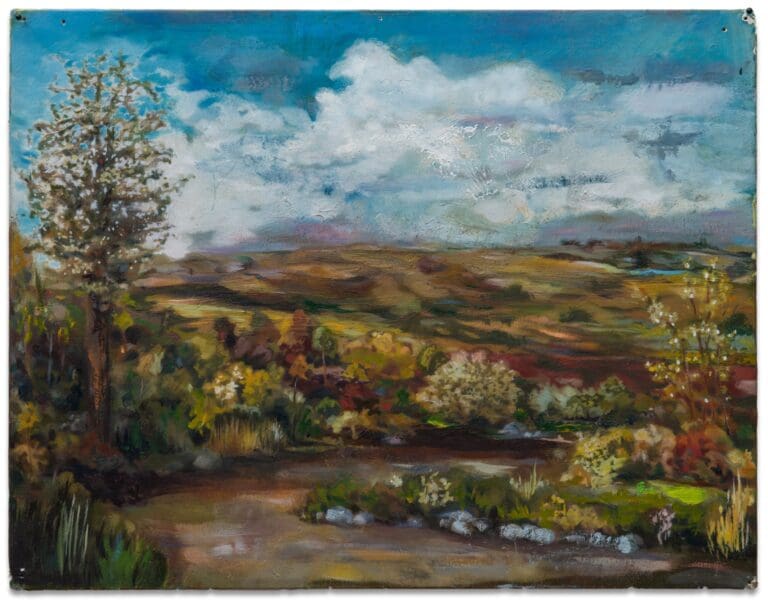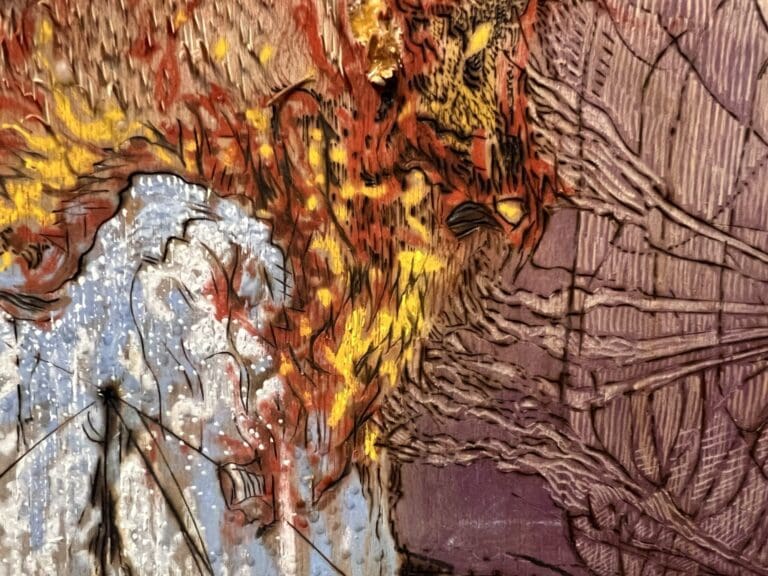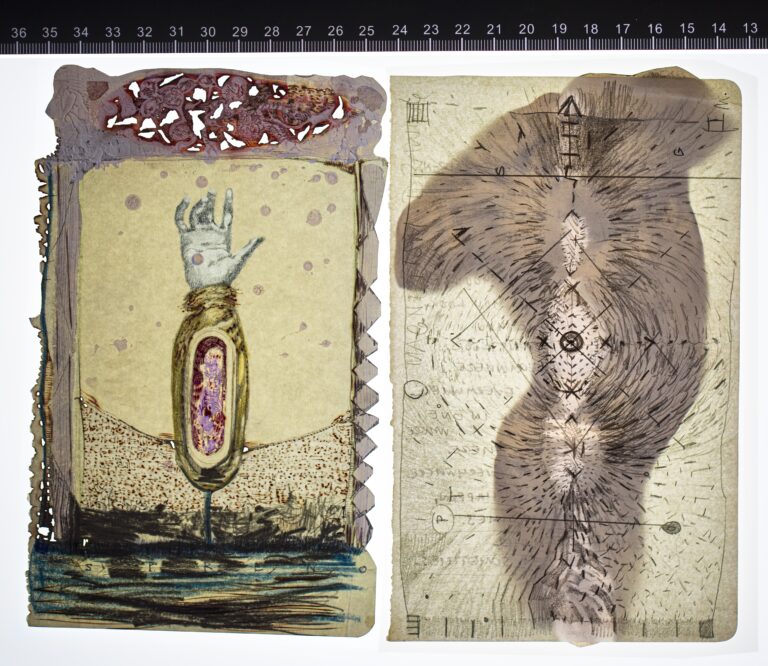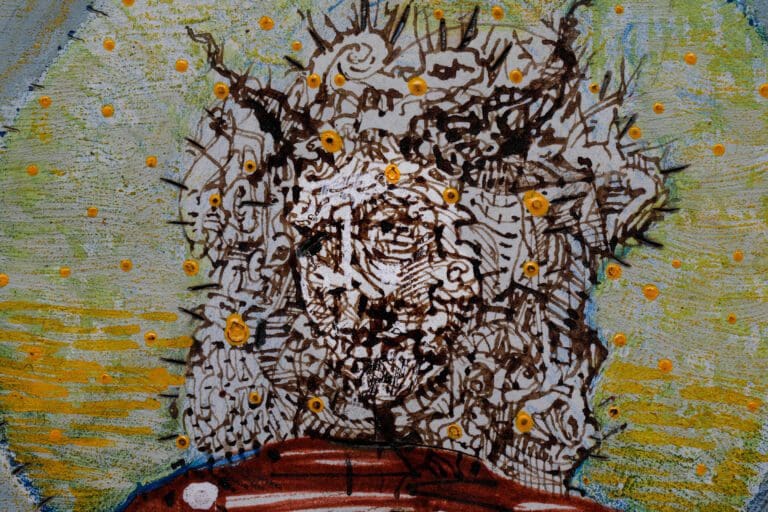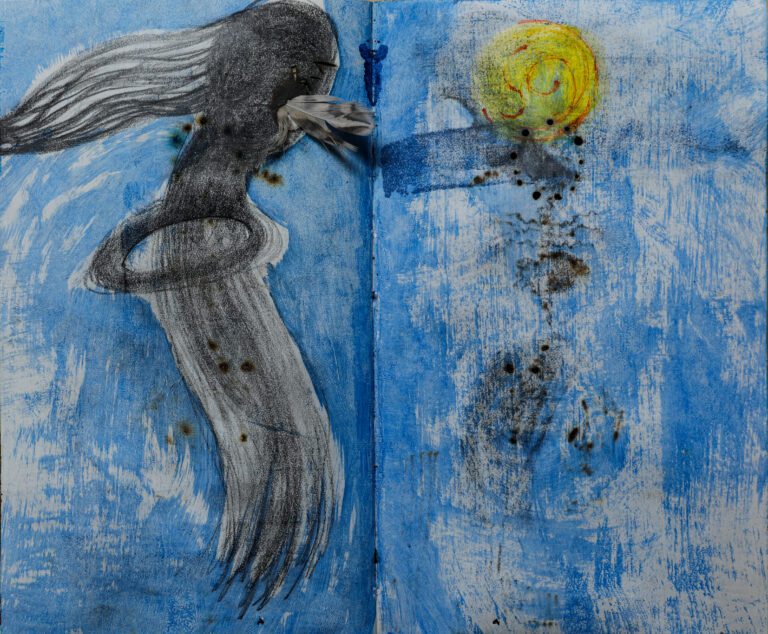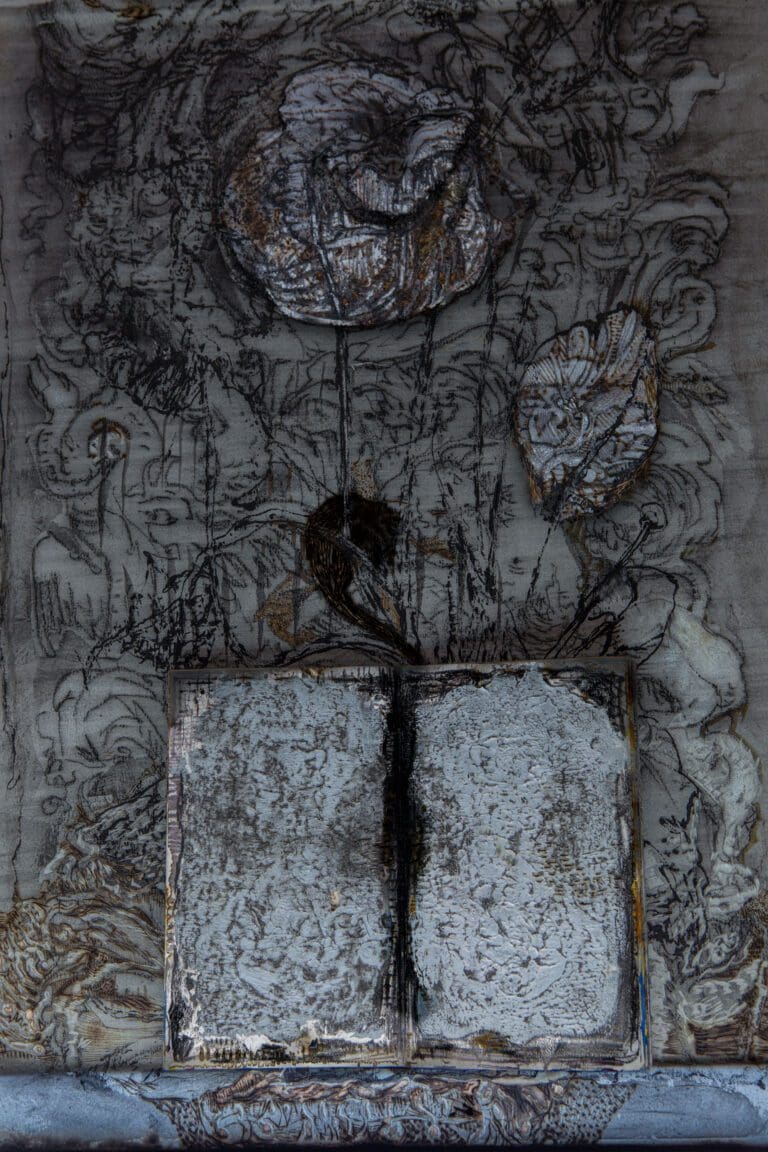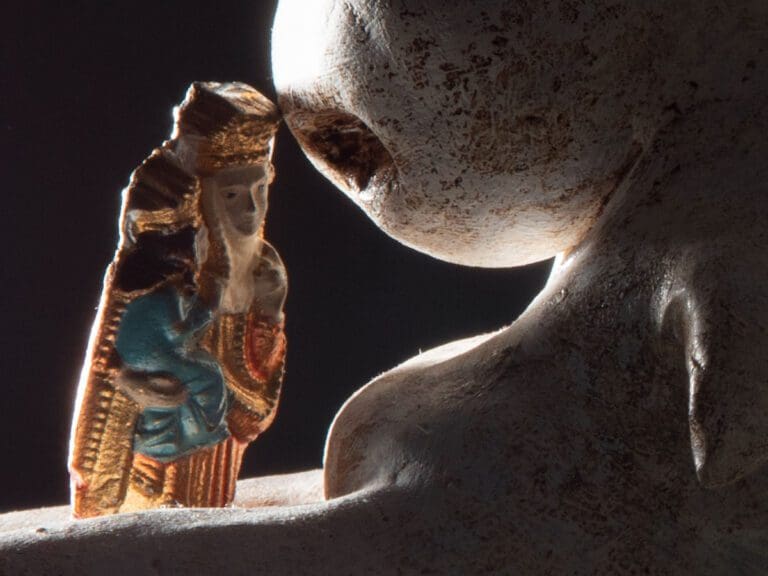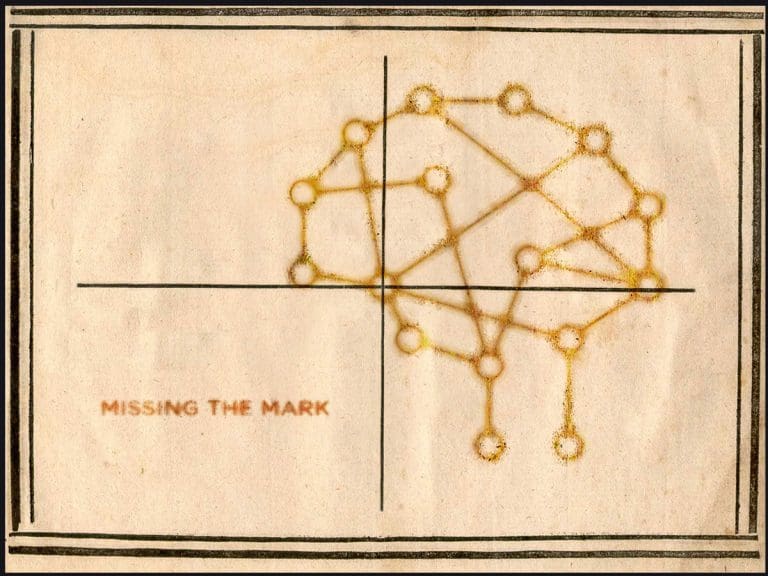Photographs
© Milo Dlouhy
Still life photography: Oil paint on paper, Wooden House & Puppet Head (angel)
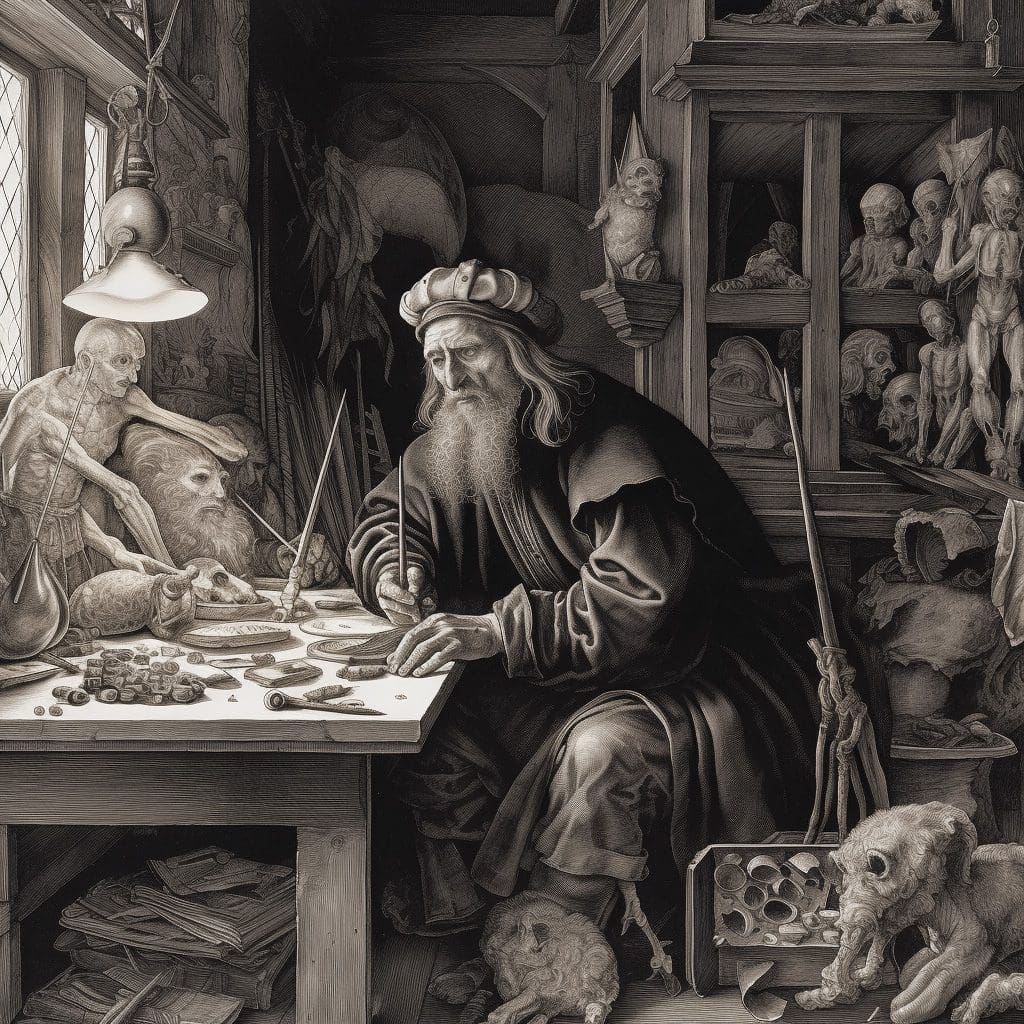
The concept of the anchorite, derived from the Greek word ‘anachoreo’, meaning ‘to withdraw or retreat’, traditionally denotes a religious recluse who chooses to live in seclusion, often in a small cell or ‘anchorhold’, to dedicate their life to prayer and meditation. This concept, while largely associated with religious practice in the Early Middle Ages, can also be applied metaphorically to the modern artist who chooses to seclude themselves for the sake of their work. In this context, the artist is seen as an ‘artistic anchorite’ – one who withdraws from society in pursuit of their creative endeavours, dedicating themselves wholly to their art.
The Anchorite: A Historical Perspective
Historically, anchorites were individuals who chose to retreat from the world, living in small, isolated cells usually attached to a church. Their days were spent in prayer, contemplation, and often self-denial, in order to foster a closer connection with the divine. The parallel with the dedicated artist may not be immediately evident, but when we examine the commitment, isolation, and single-minded focus of the anchorite, the metaphor begins to take shape.
The Anchorhold of the Artist
In the context of the artist, the anchorhold can be seen as a metaphorical space – a studio, a writing desk, a darkroom, or simply a quiet corner of the mind where the artist retreats to create. This space is not merely a physical location, but also a mental and emotional retreat where the artist can focus solely on their work. It is a place where external distractions are minimized, allowing the artist to delve into the depths of their creativity. Like the anchorite, the artist’s dedication to their work often necessitates a certain degree of isolation from the world.
Creative Isolation and Deep Work
In the modern world, the concept of ‘deep work’ has become increasingly relevant. This term, coined by productivity expert Cal Newport, refers to the ability to focus without distraction on a cognitively demanding task. The artist-as-anchorite embodies this concept, choosing to seclude themselves in their ‘anchorhold’ in order to engage in this deep, focused work. This retreat is not about shunning society, but about creating a space where their art can flourish, unimpeded by the demands and distractions of the outside world.
Just as the anchorite would spend hours in prayer and contemplation, the artist spends hours in the anchorhold – painting, writing, sculpting, composing, or engaging in whatever form their art takes. The solitude of the anchorhold allows the artist to immerse themselves in their work, to lose themselves in the process of creation, and to connect deeply with their art.
The Challenges of Artistic Anchoritism
Just as the life of an anchorite was not without its challenges, so too is the path of the artist-as-anchorite fraught with difficulties. The isolation necessary for deep, creative work can lead to feelings of loneliness and disconnection. Balancing the need for solitude with the human need for connection and community can be a delicate act. Moreover, the intensity of focus required can sometimes lead to burnout.
Despite these challenges, many artists find the rewards of such deep dedication to their work to be well worth the sacrifices. The satisfaction of creating something truly unique, of expressing oneself fully and authentically, can be a profound source of fulfilment and joy.
Conclusion
In summary, the concept of the anchorite provides a powerful metaphor for the artist who chooses to dedicate themselves fully to their work. While this path may not be for everyone, for those who choose it, the ‘anchorhold’ becomes a sacred space of creation, asanctuary where the artist can connect deeply with their work, and ultimately, with themselves. This dedication, this withdrawal, is not a rejection of the world, but rather a profound embrace of the artist’s own inner world and the creative gifts they have to offer.
Just as the anchorite sought a deeper understanding of the divine, the artist-as-anchorite seeks a deeper understanding of themselves and their art. The seclusion of the anchorhold allows them to dive into the depths of their creativity, to explore the furthest reaches of their imagination, and to bring forth into the world works of art that might not have been possible in the midst of the noise and distractions of everyday life.
The metaphor of the anchorite, then, serves as a testament to the power of dedicated focus and the beauty that can arise from a deep and unwavering commitment to one’s art. It is a reminder that in the quiet, secluded spaces of our lives, whether physical or metaphorical, profound creativity can flourish. The artist-as-anchorite is a figure of inspiration, a beacon for all those who seek to dedicate themselves to their art and to the exploration of their own creative depths.
Seclusion and Devotion: The Unyielding Path of the Artistically Committed
During the era of artistic exploration, thousands of artists chose to be secluded from the world. The act of secluding the artist symbolized their detachment from worldly distractions.
Texts described these artists as belonging to the “Order of the Creatively Devoted.” Their commitment was irreversible. The only way forward was towards the pursuit of pure artistic expression.
They entirely depended on public reception and patronage. If society forgot about them, their art and their devotion to it risked fading into oblivion.
